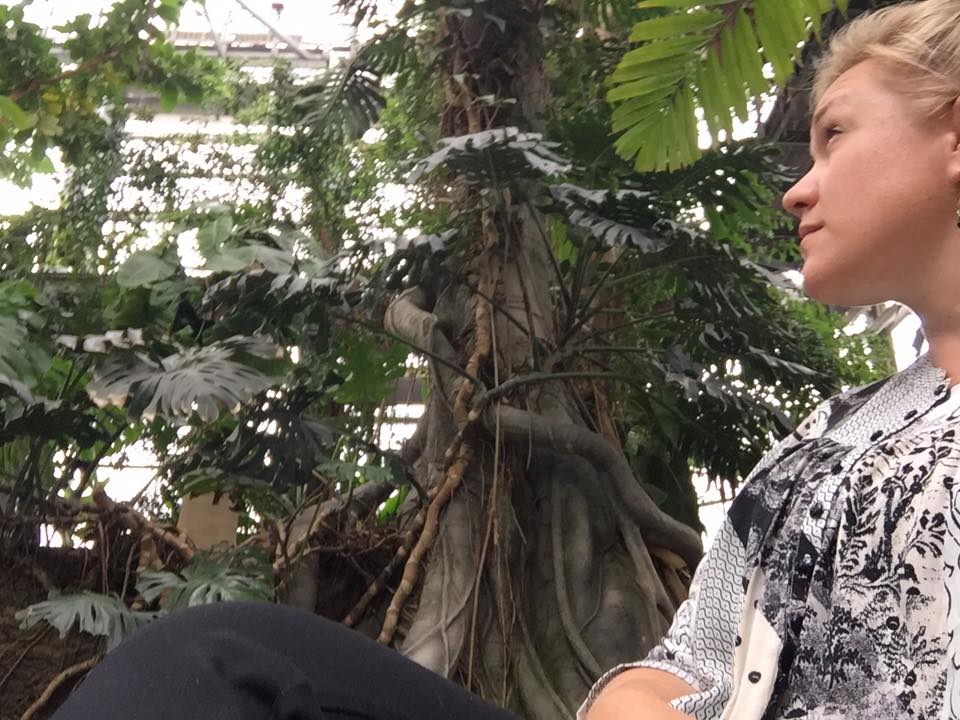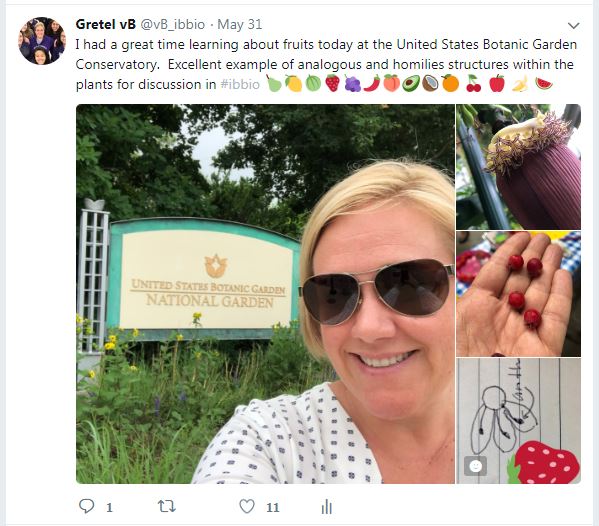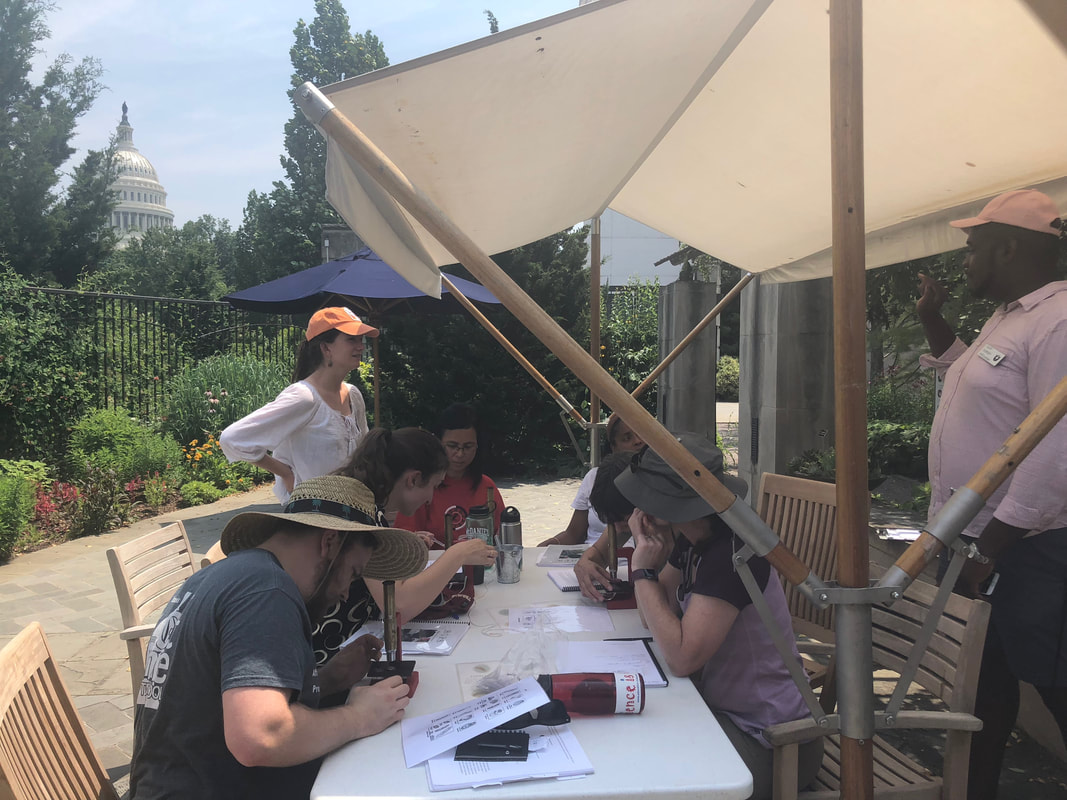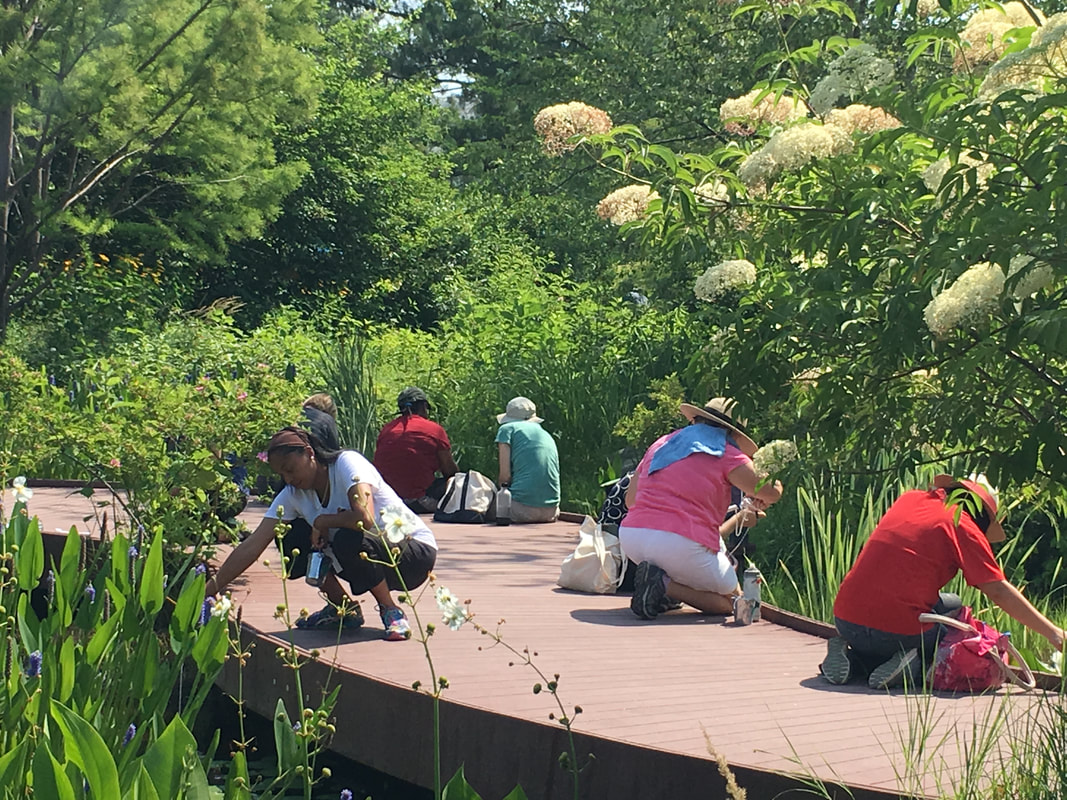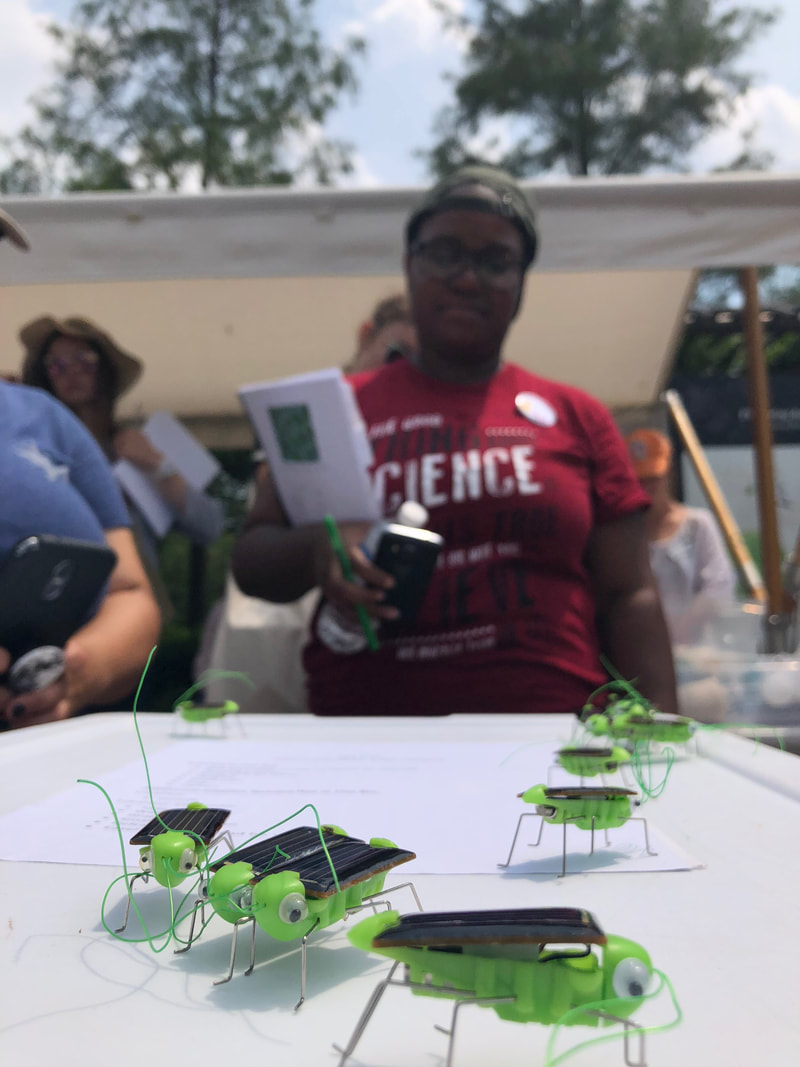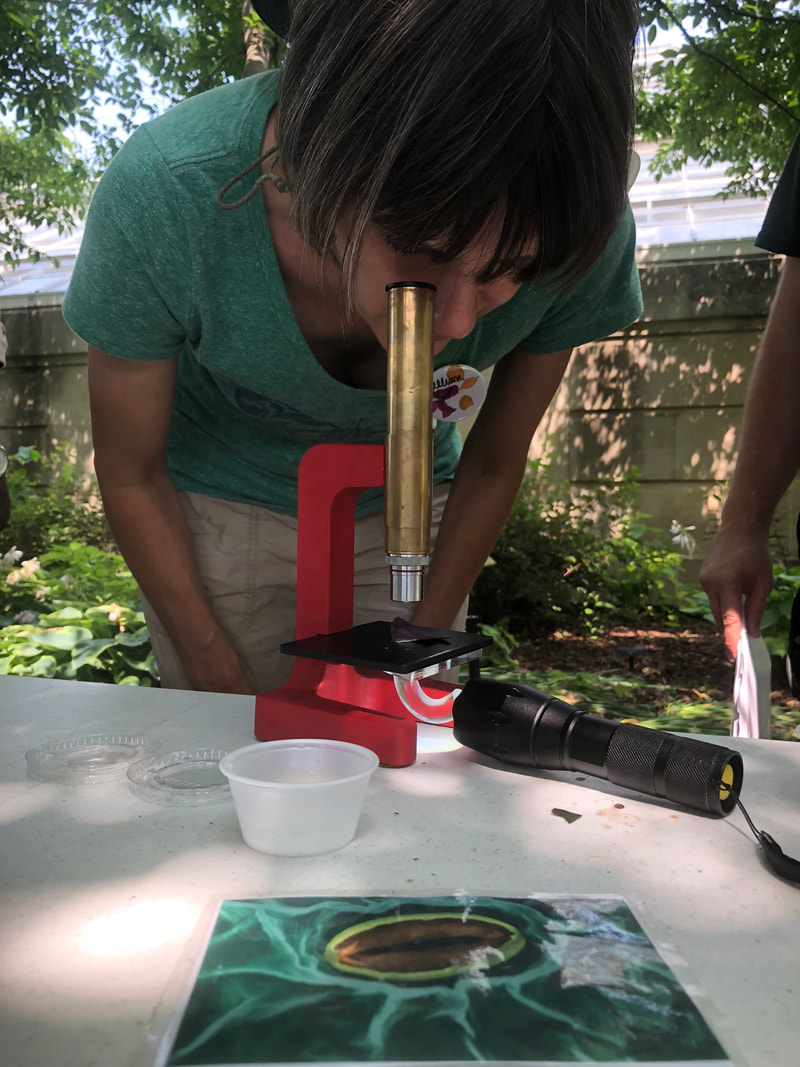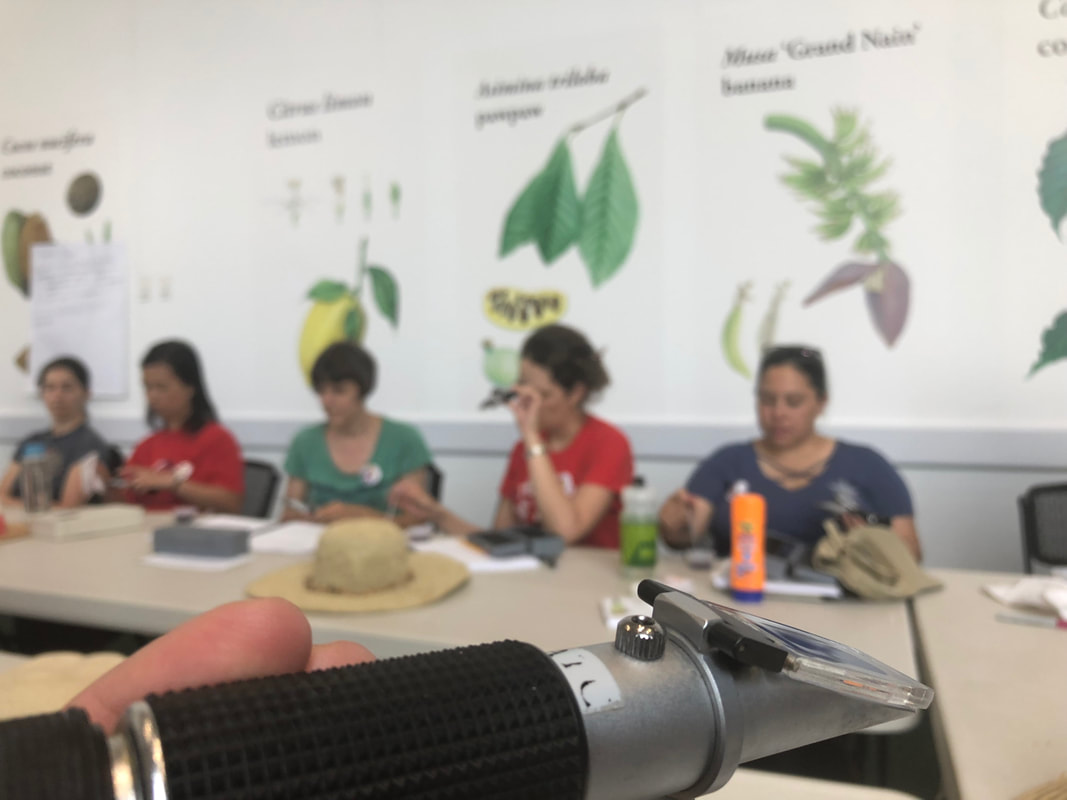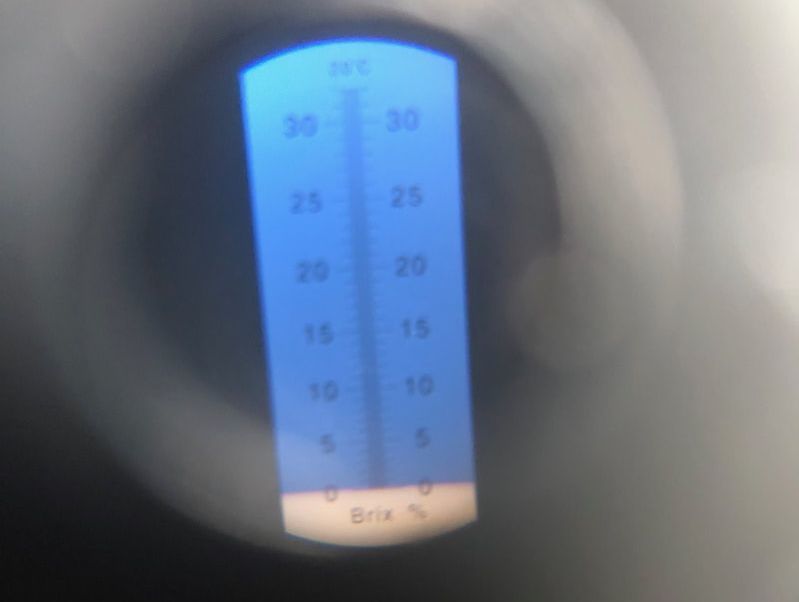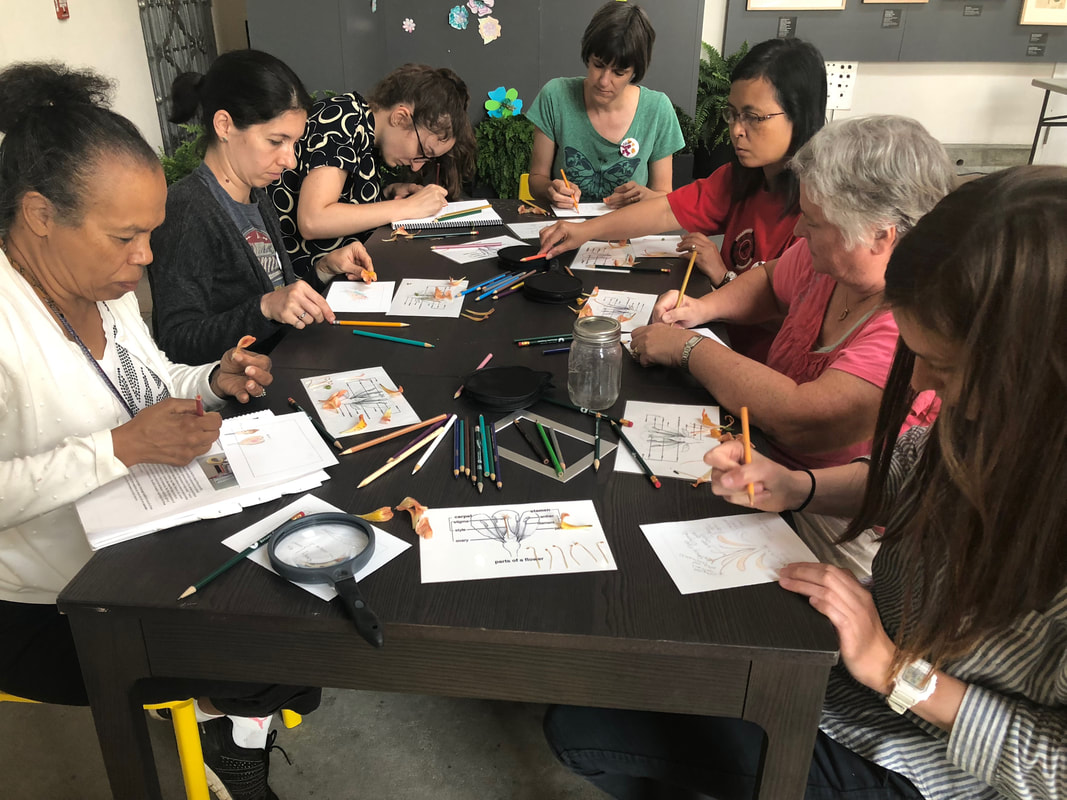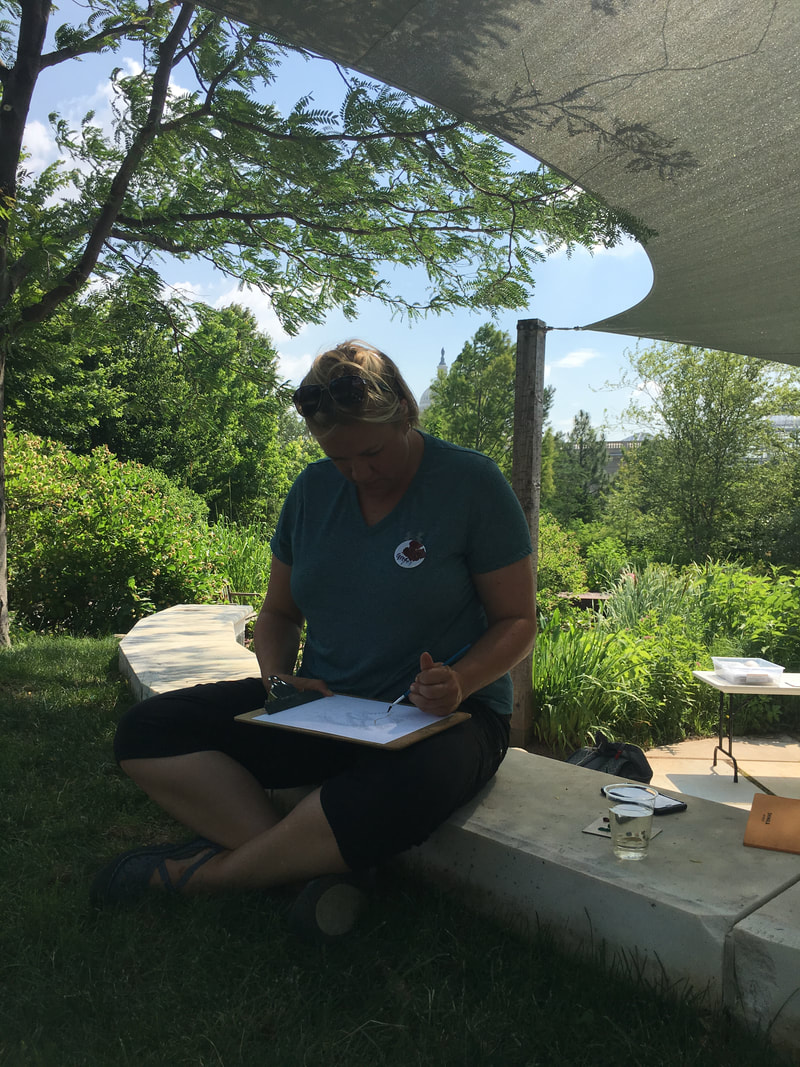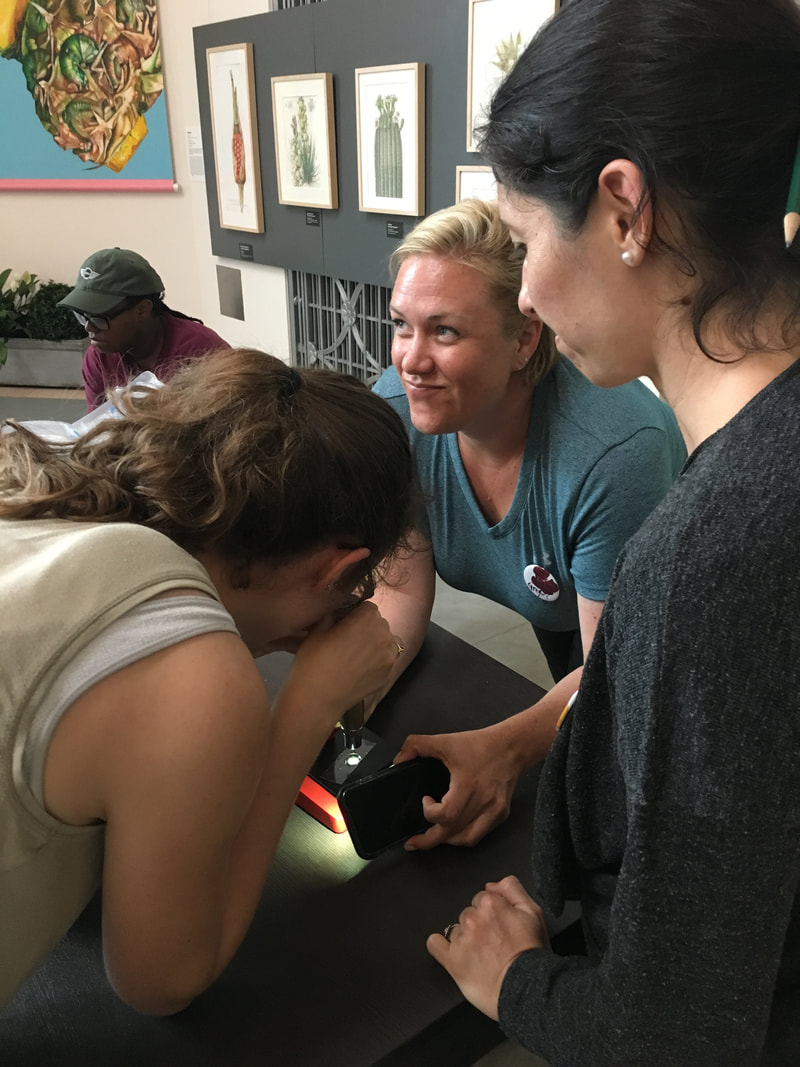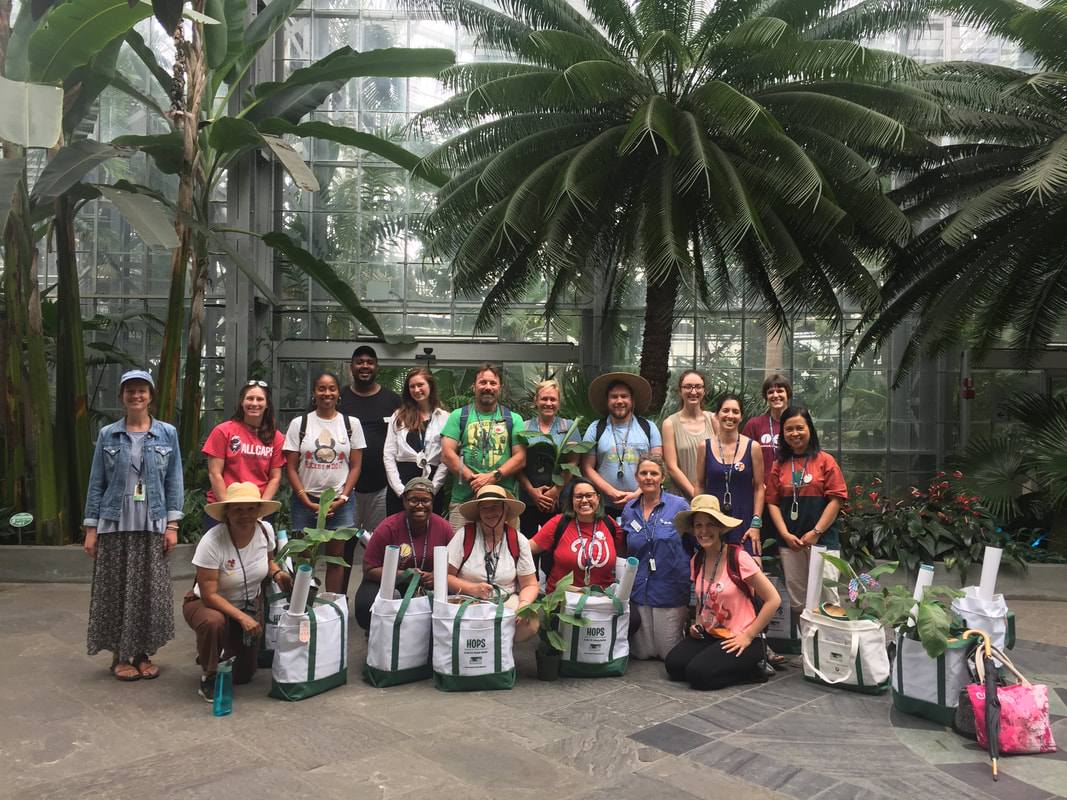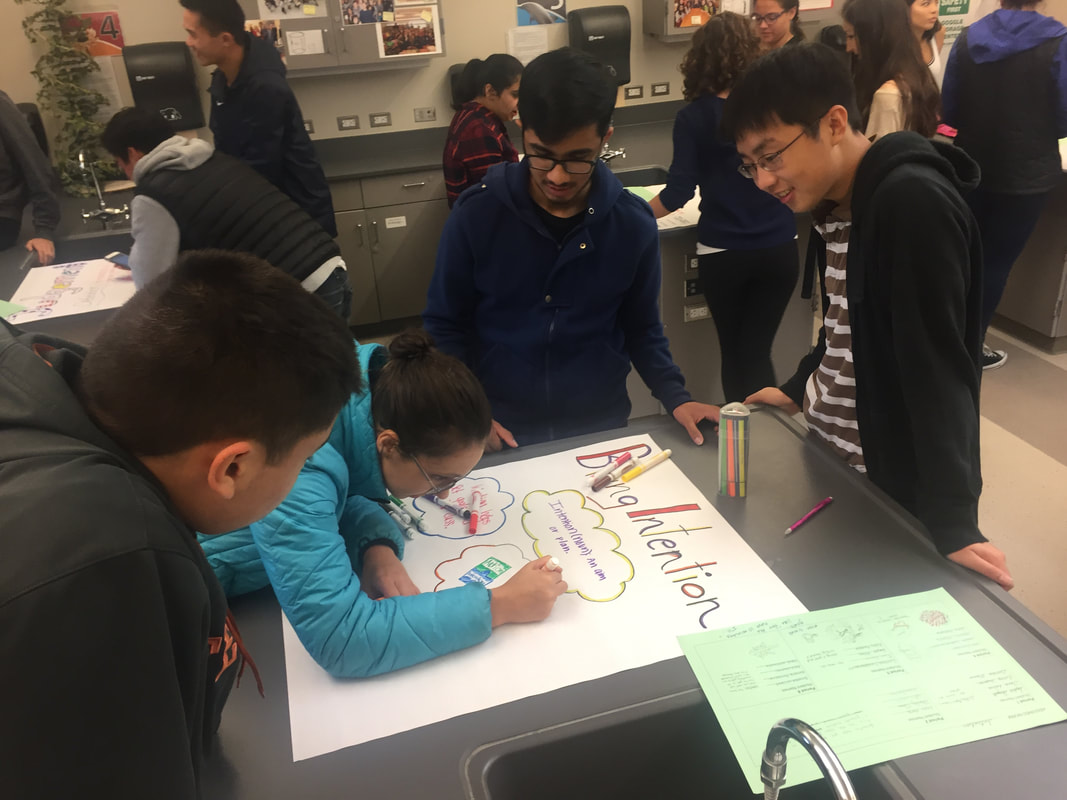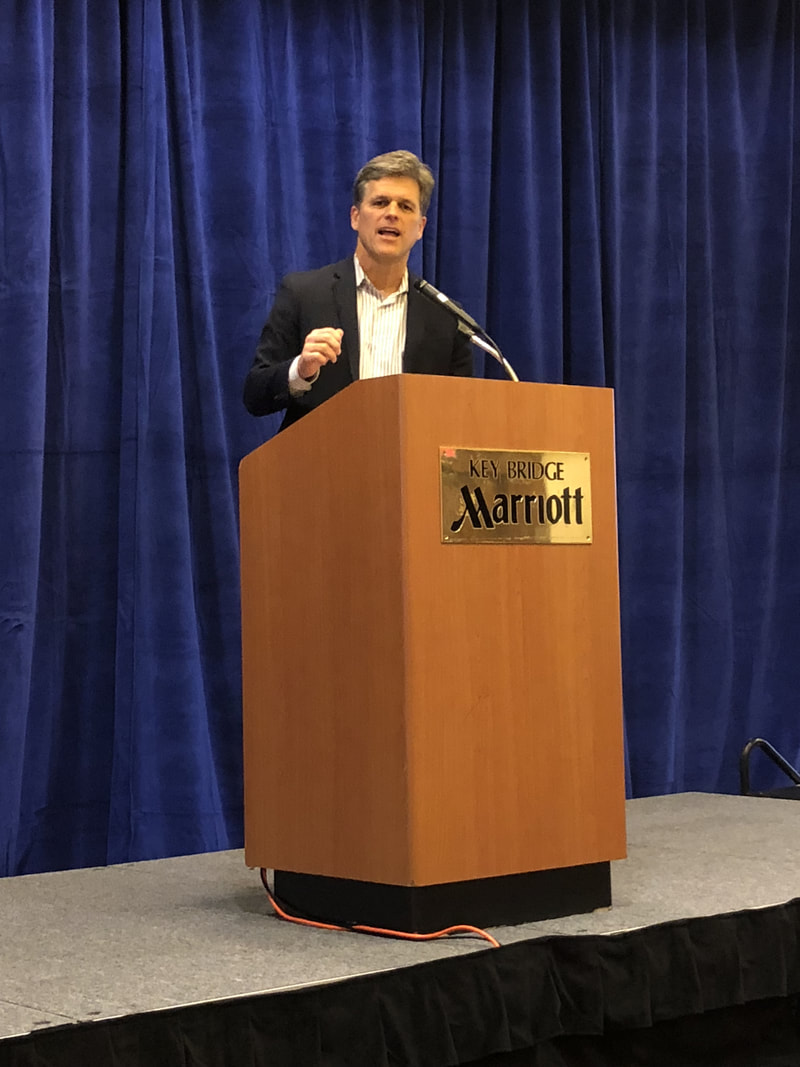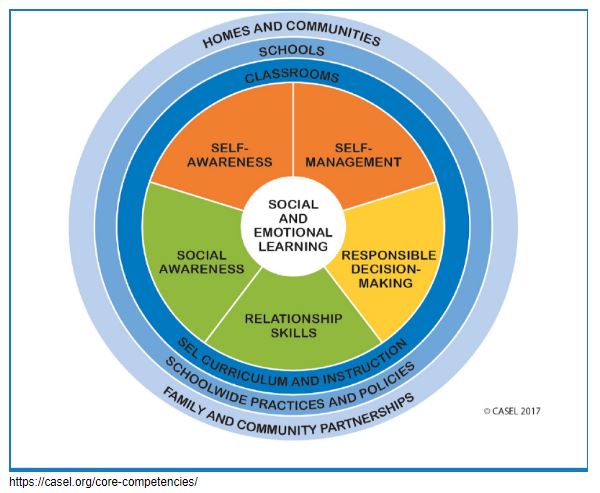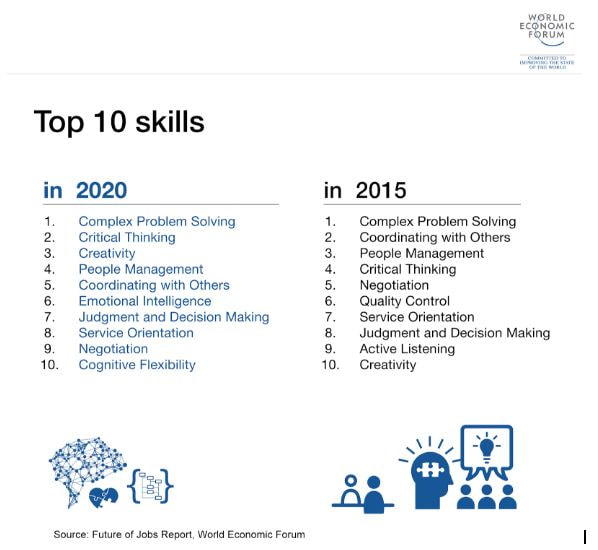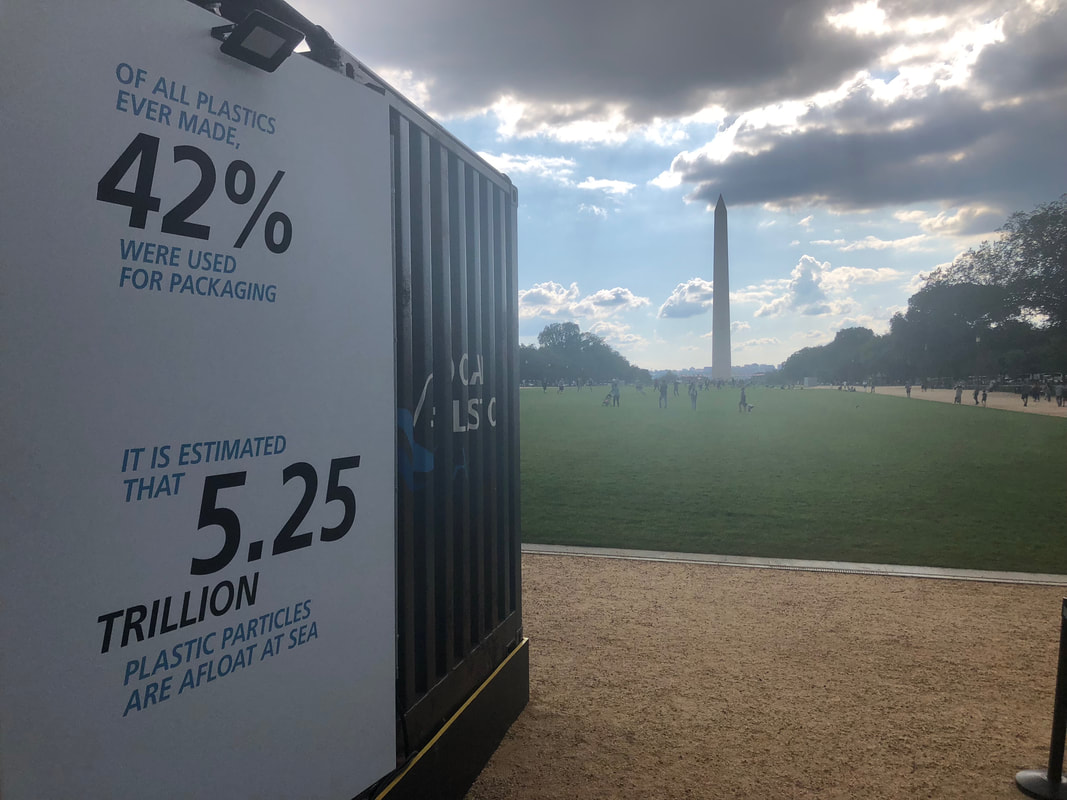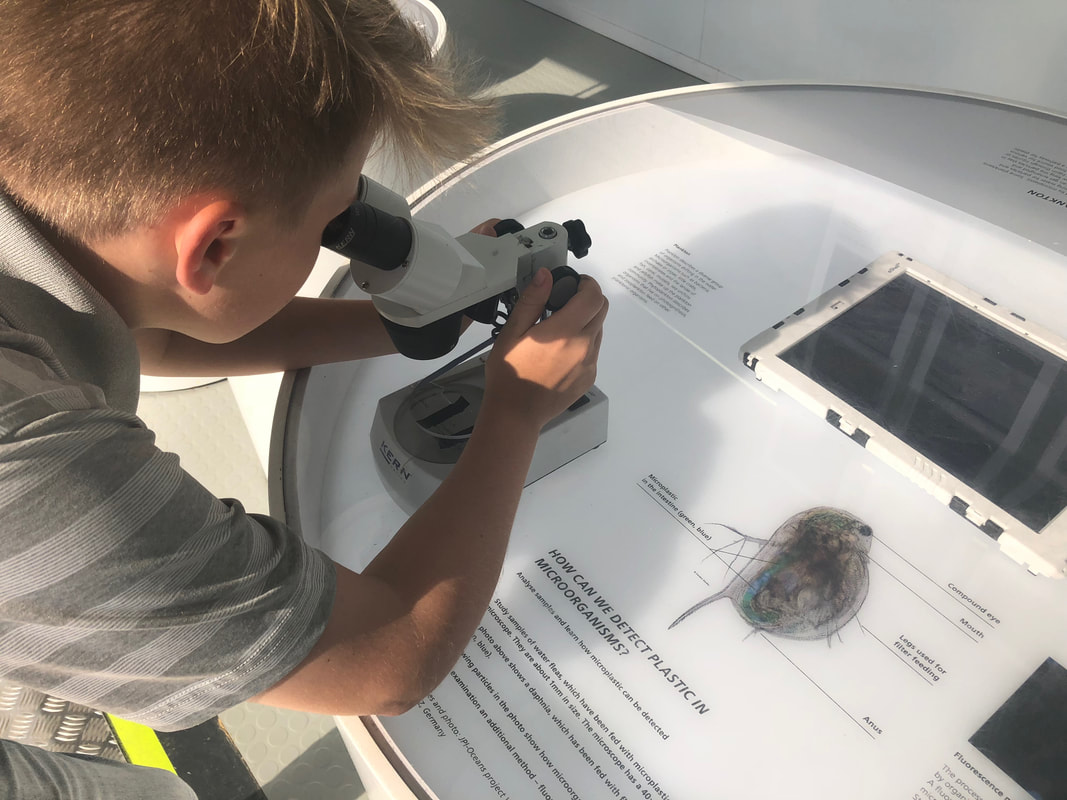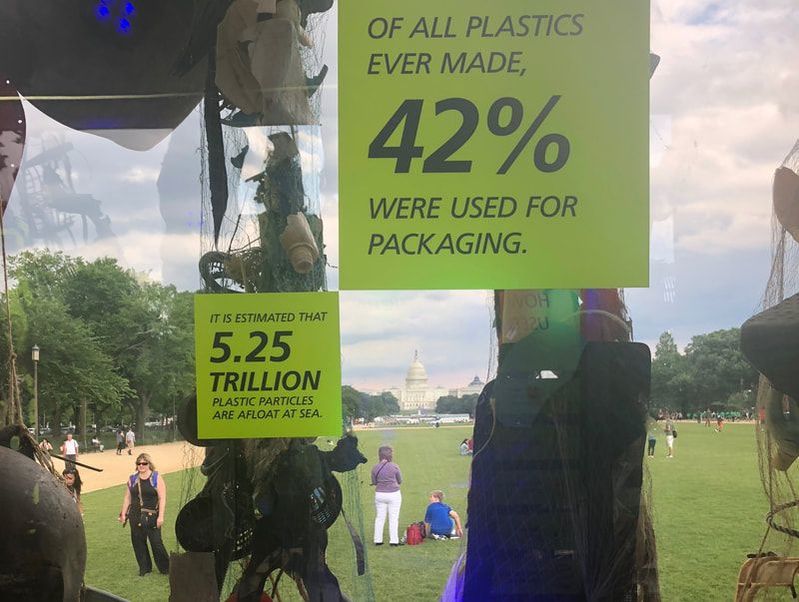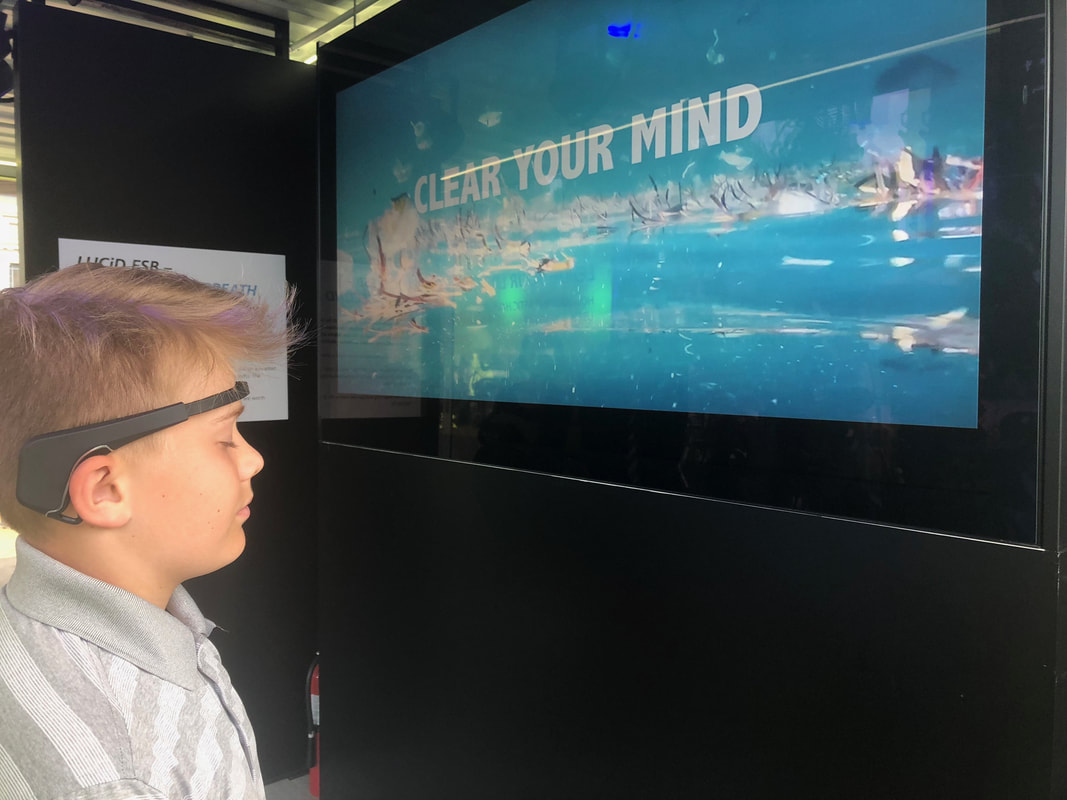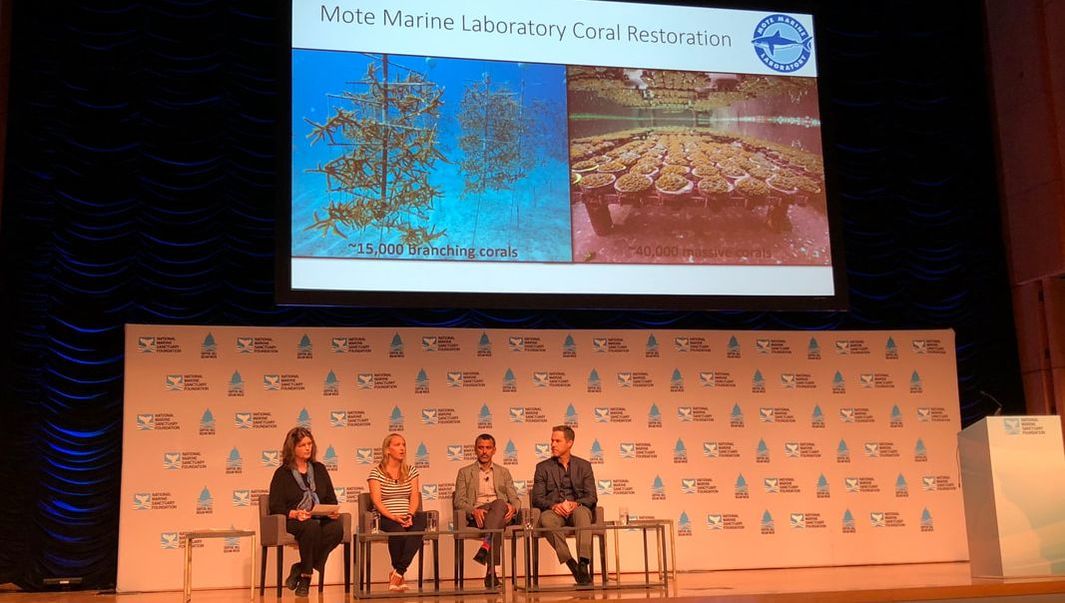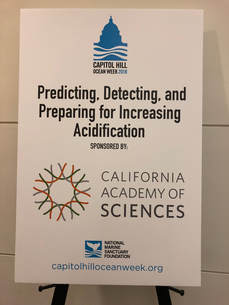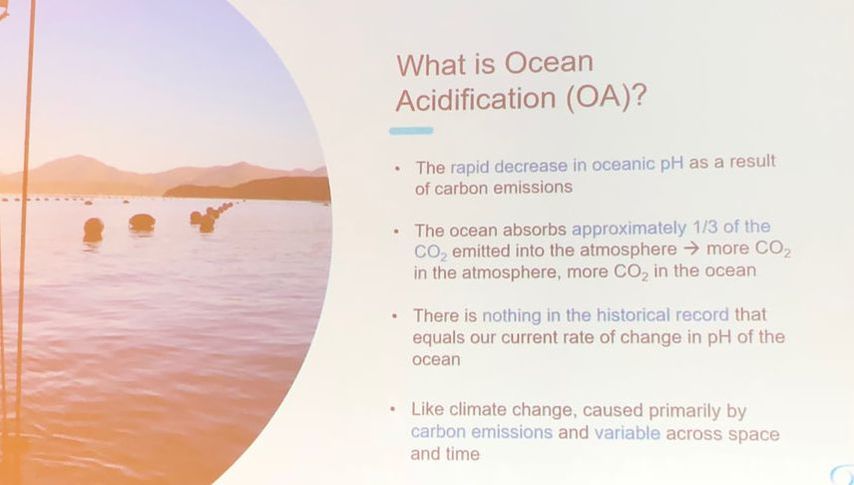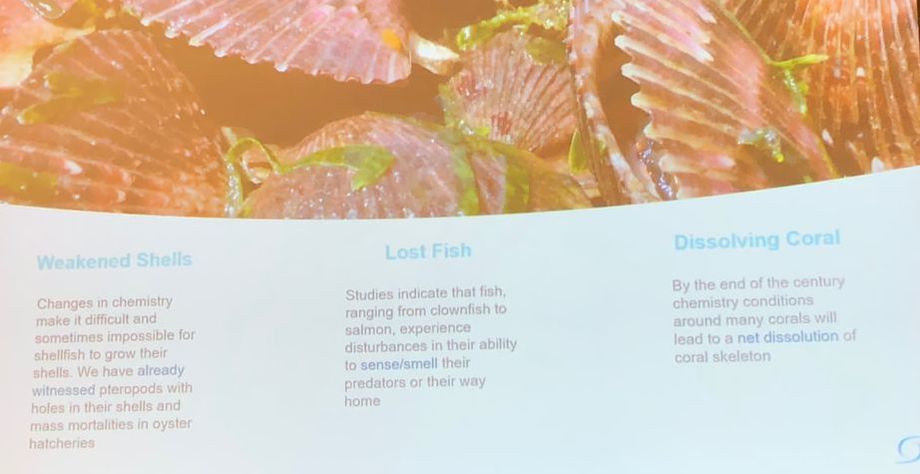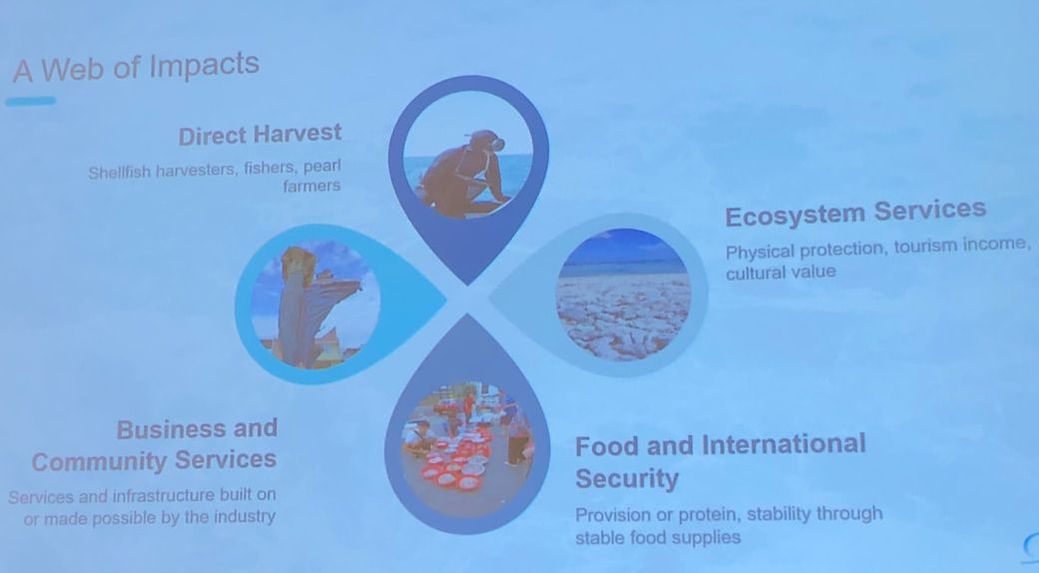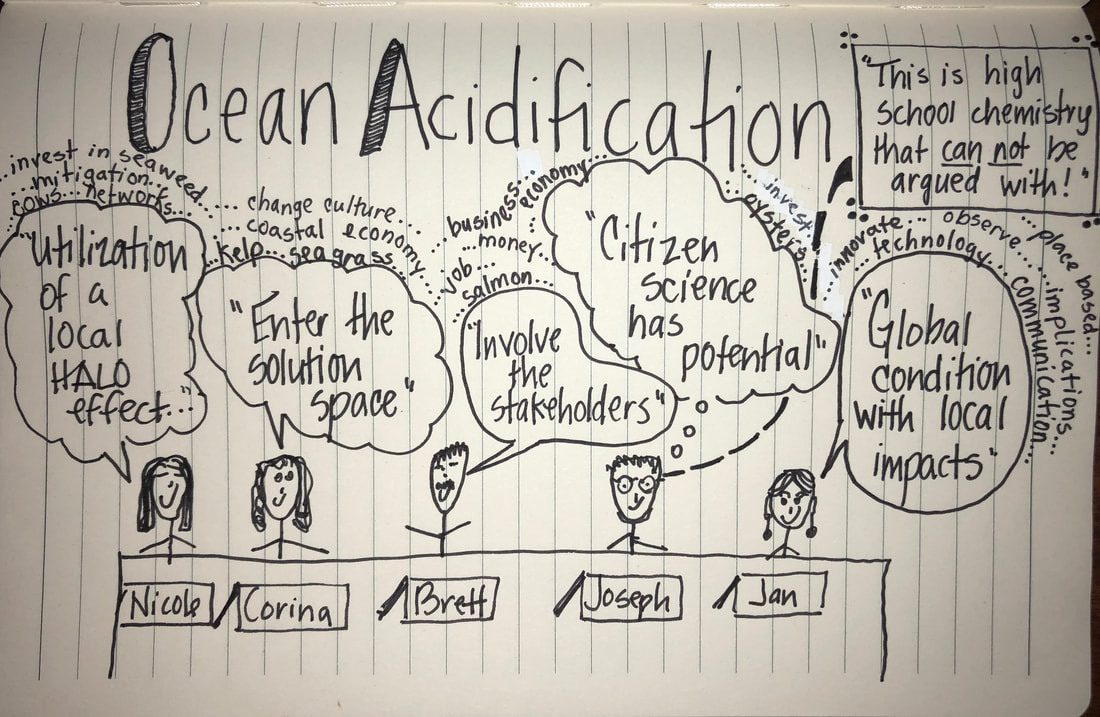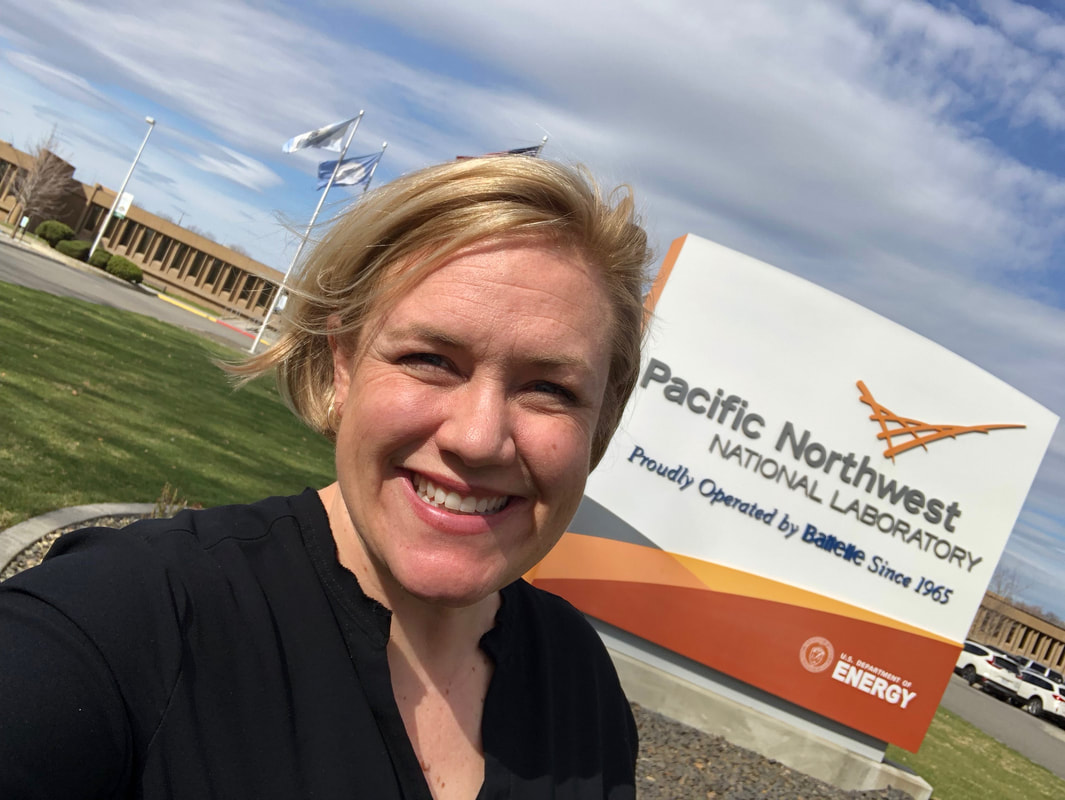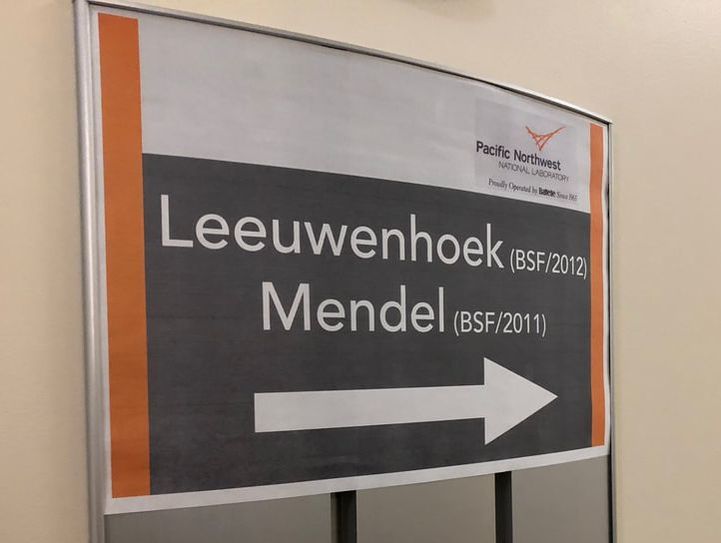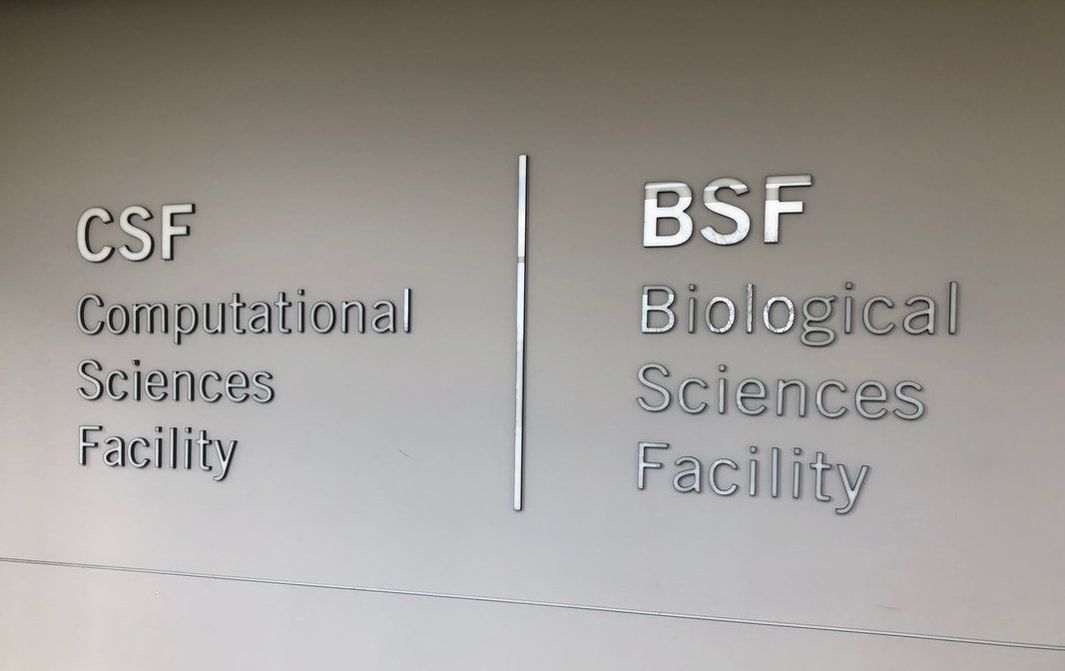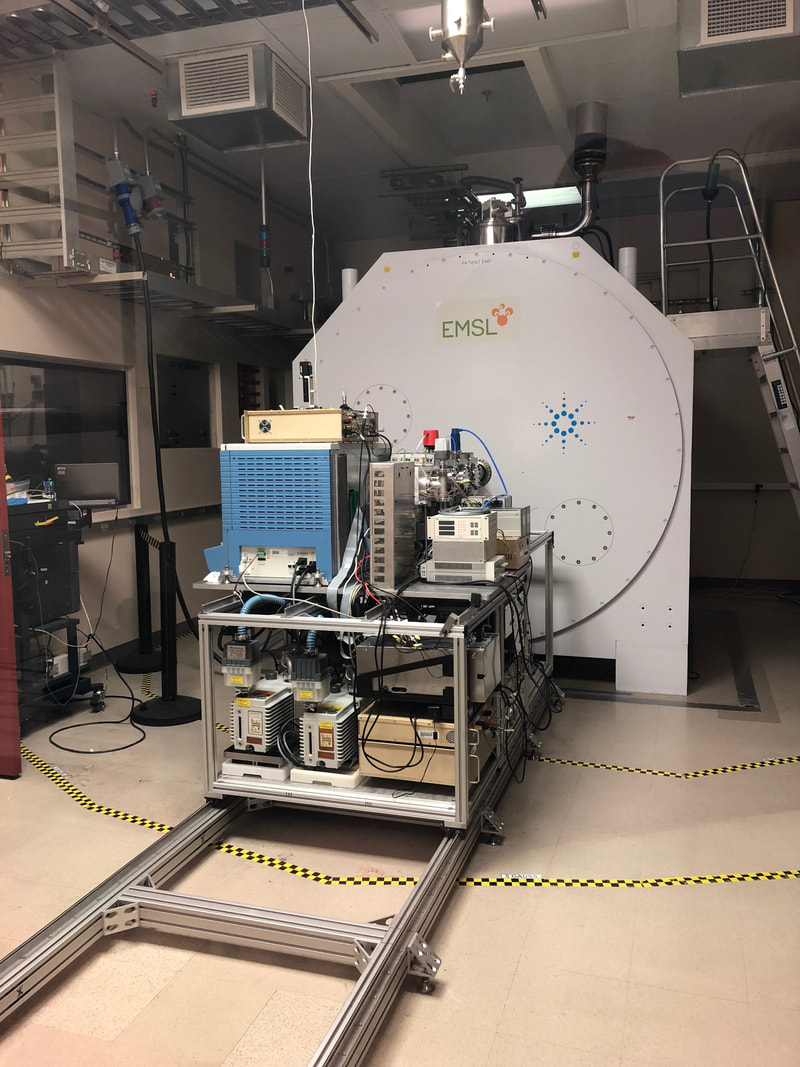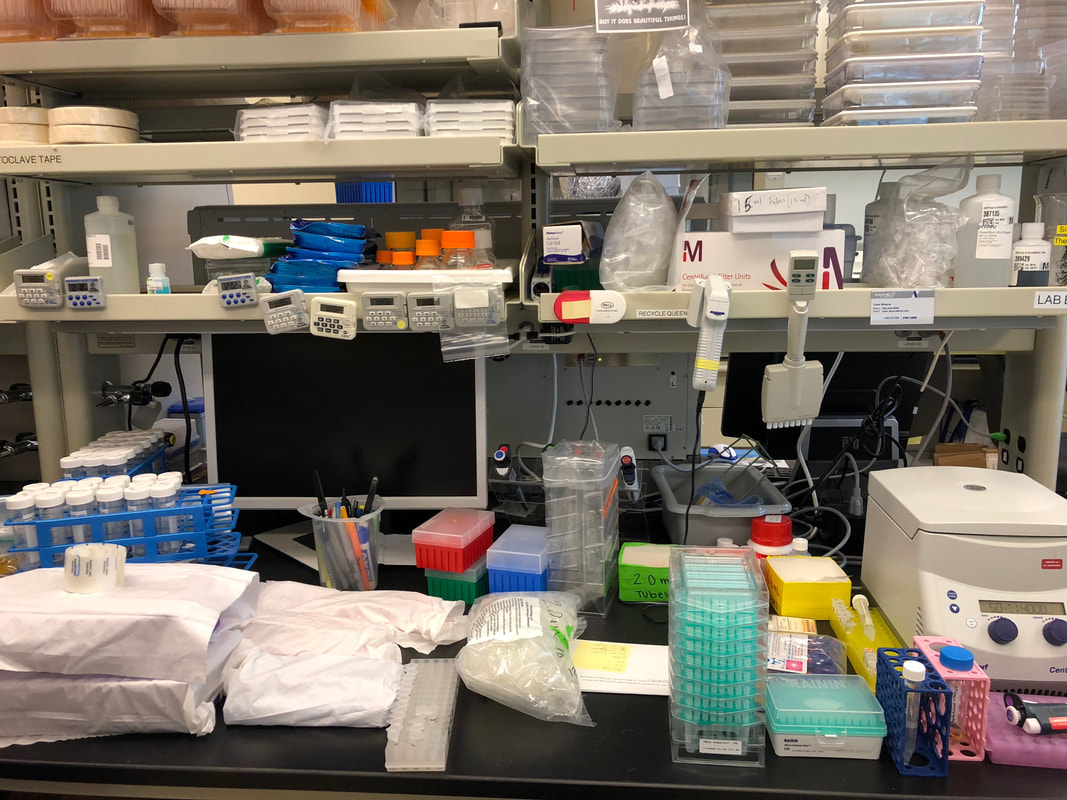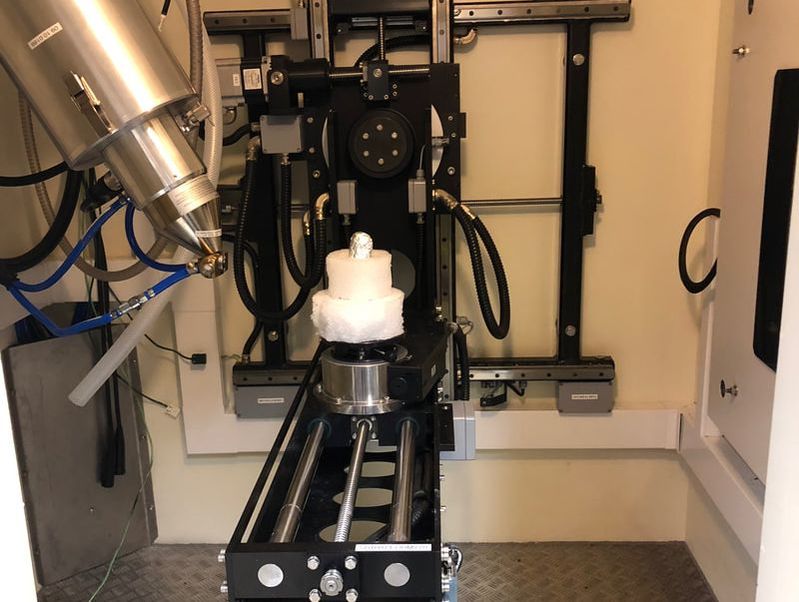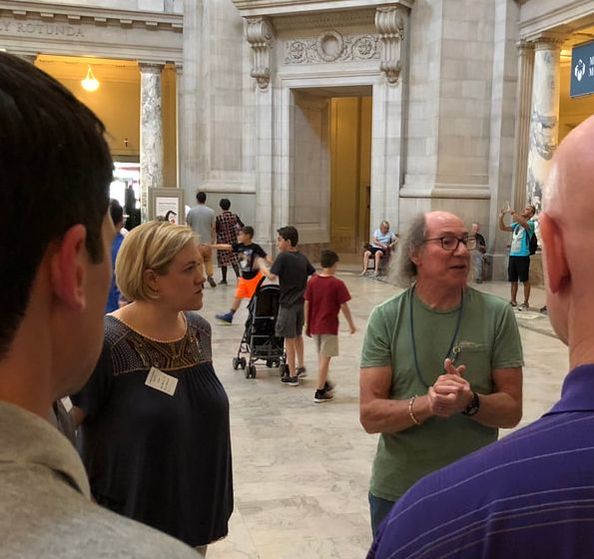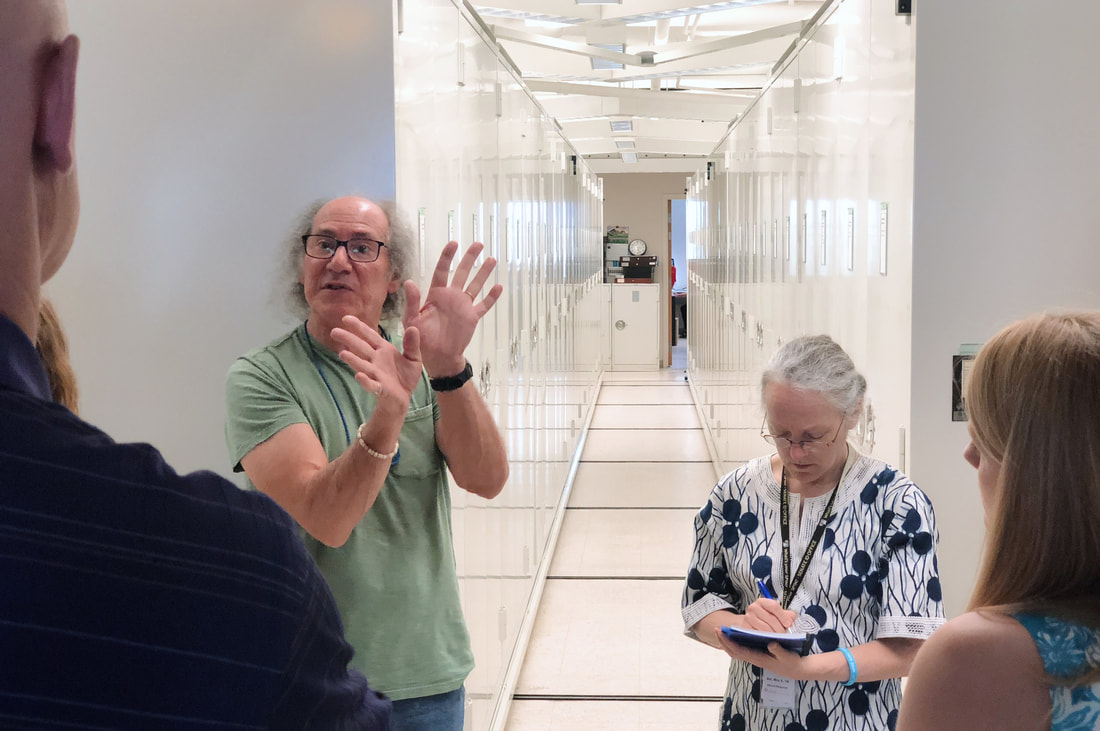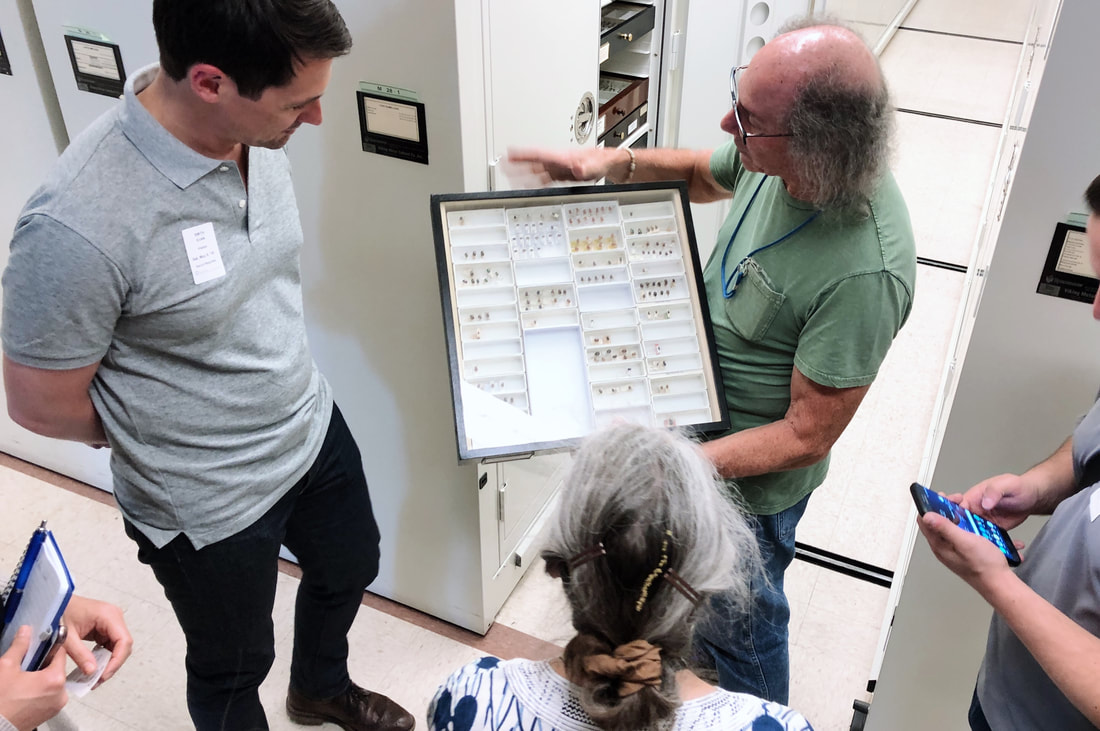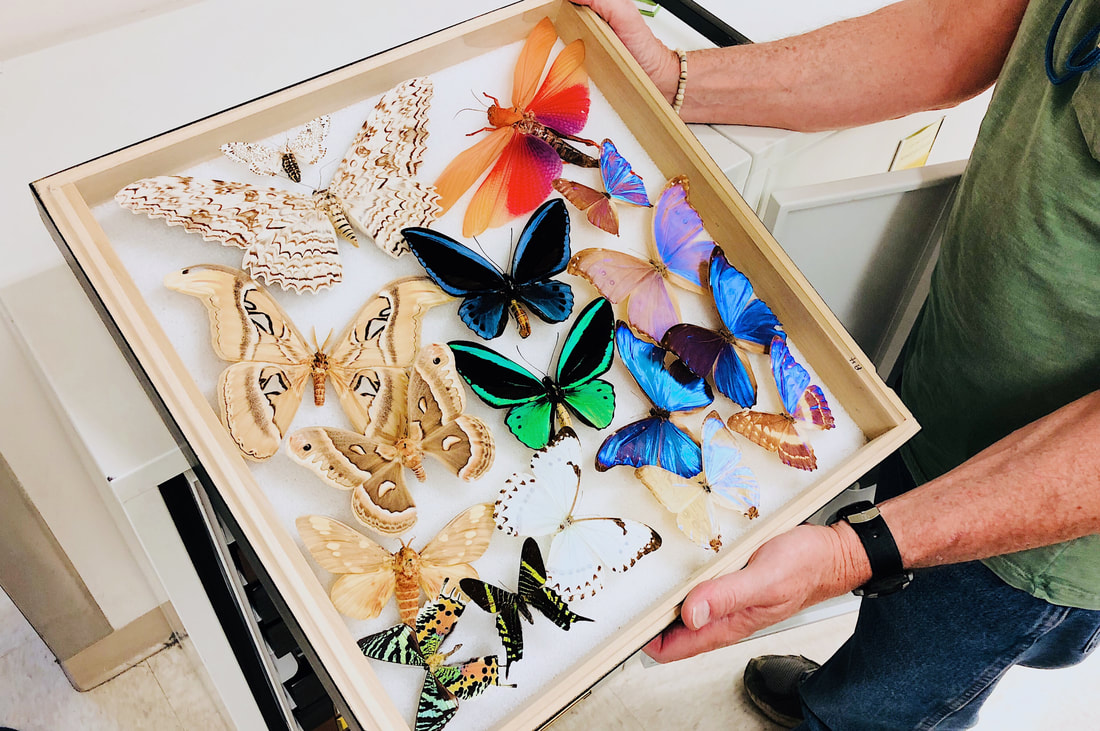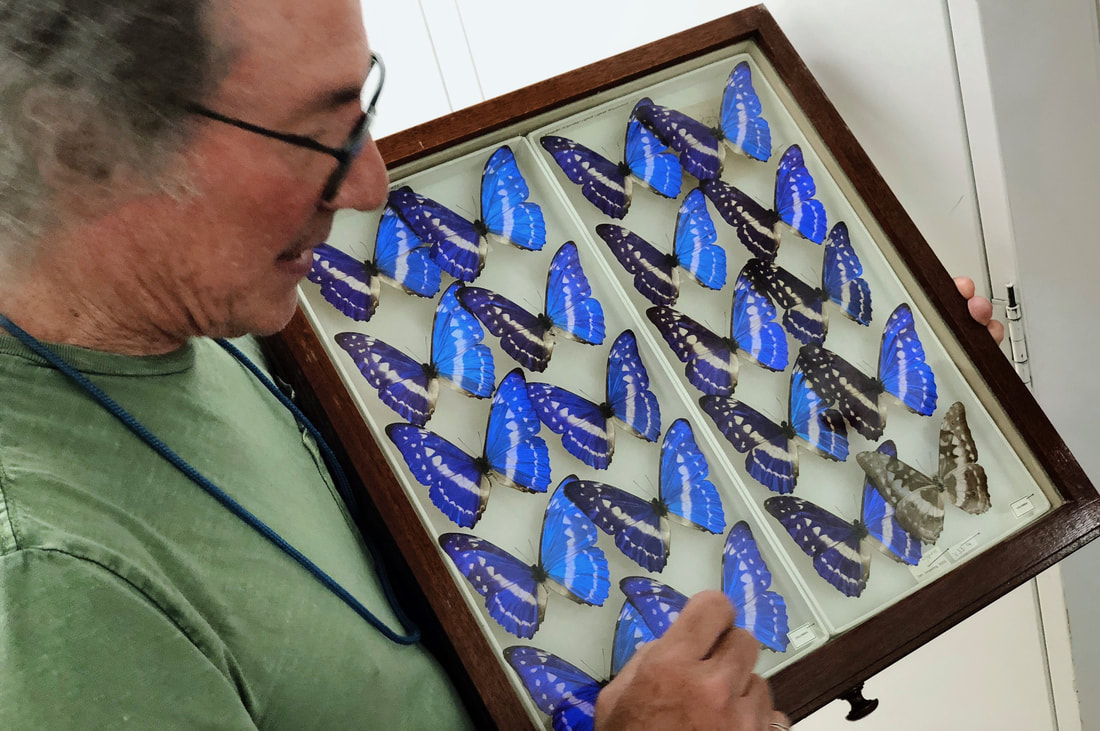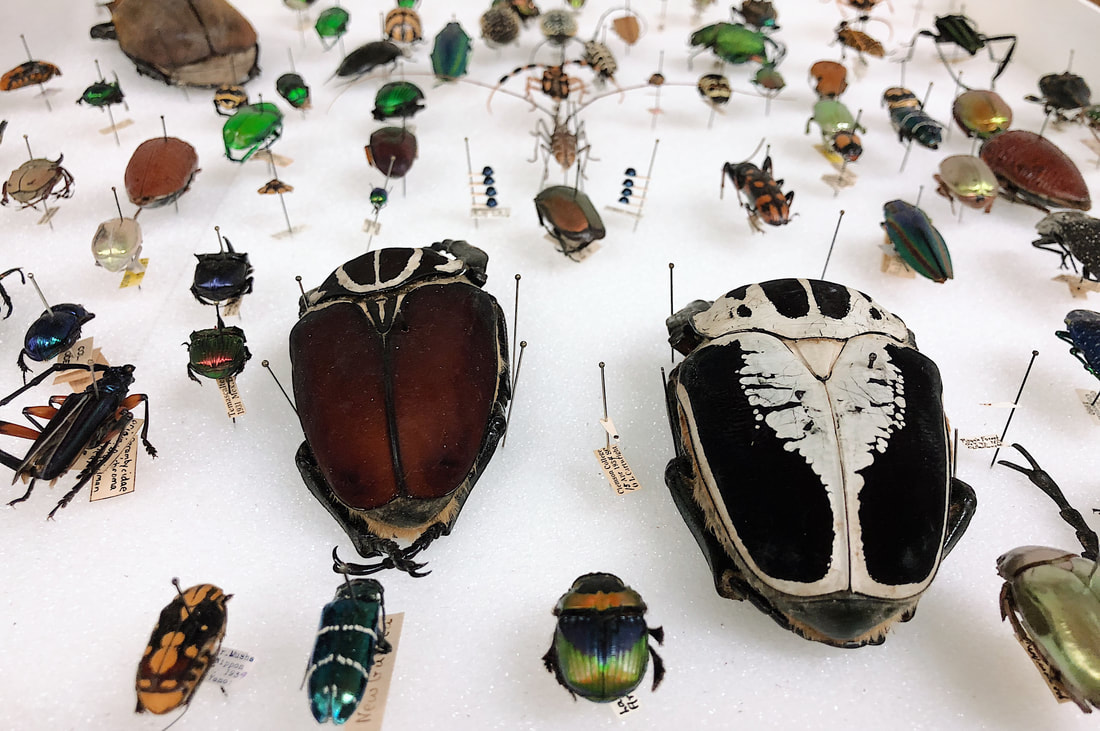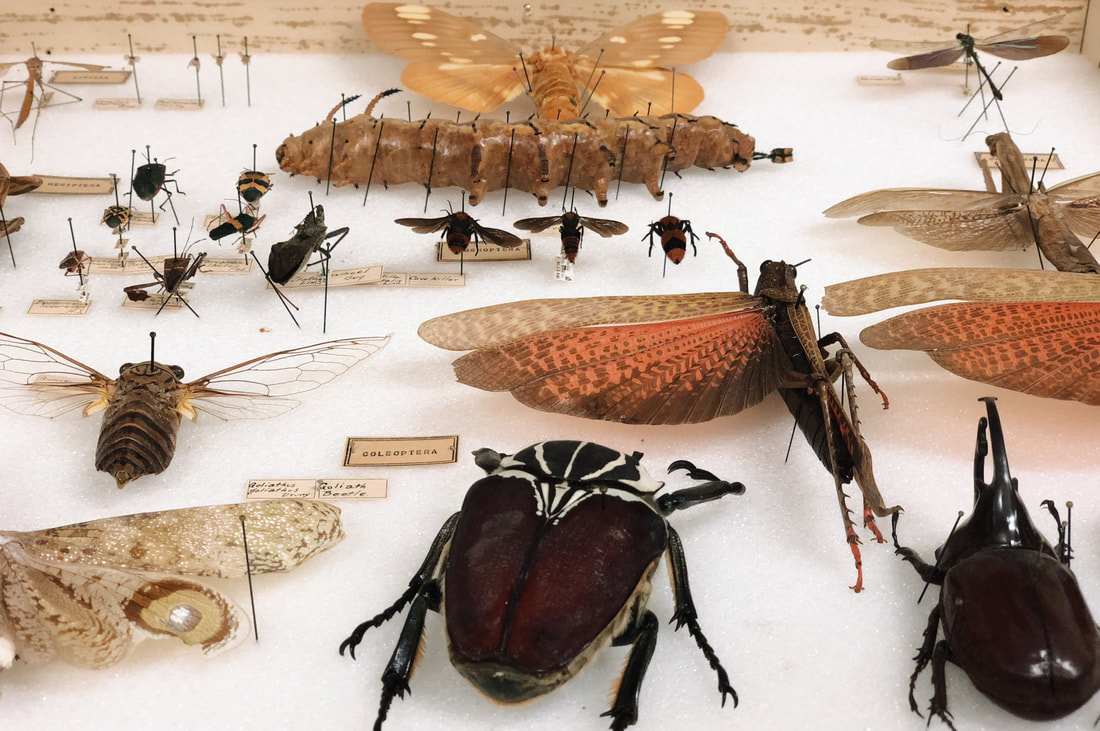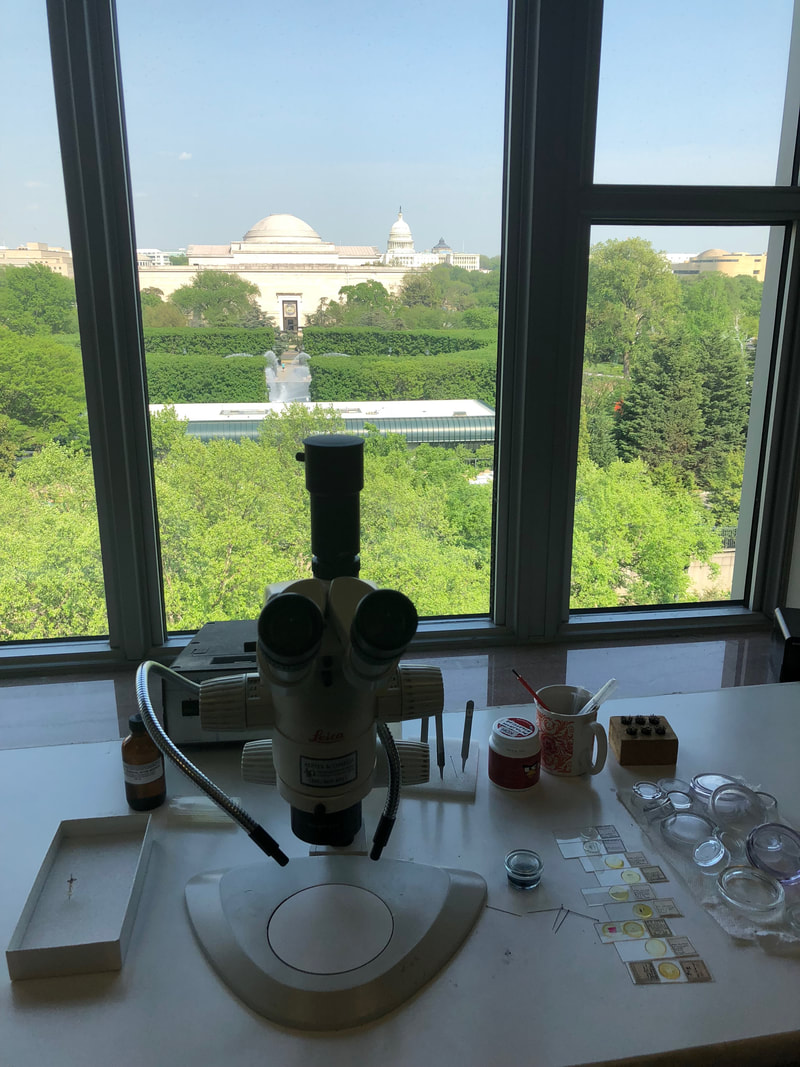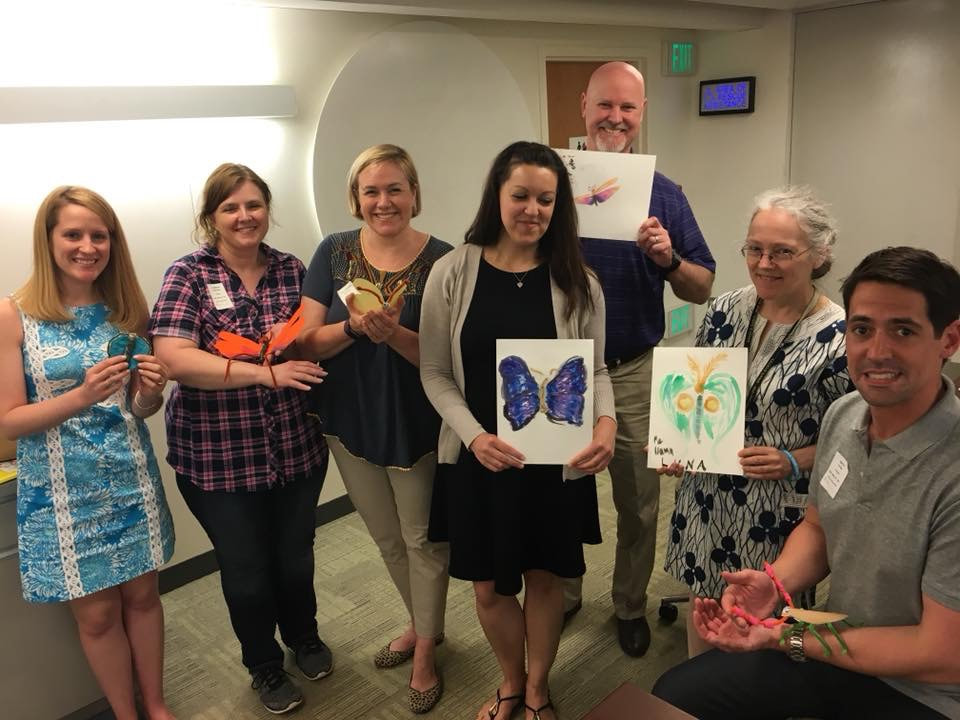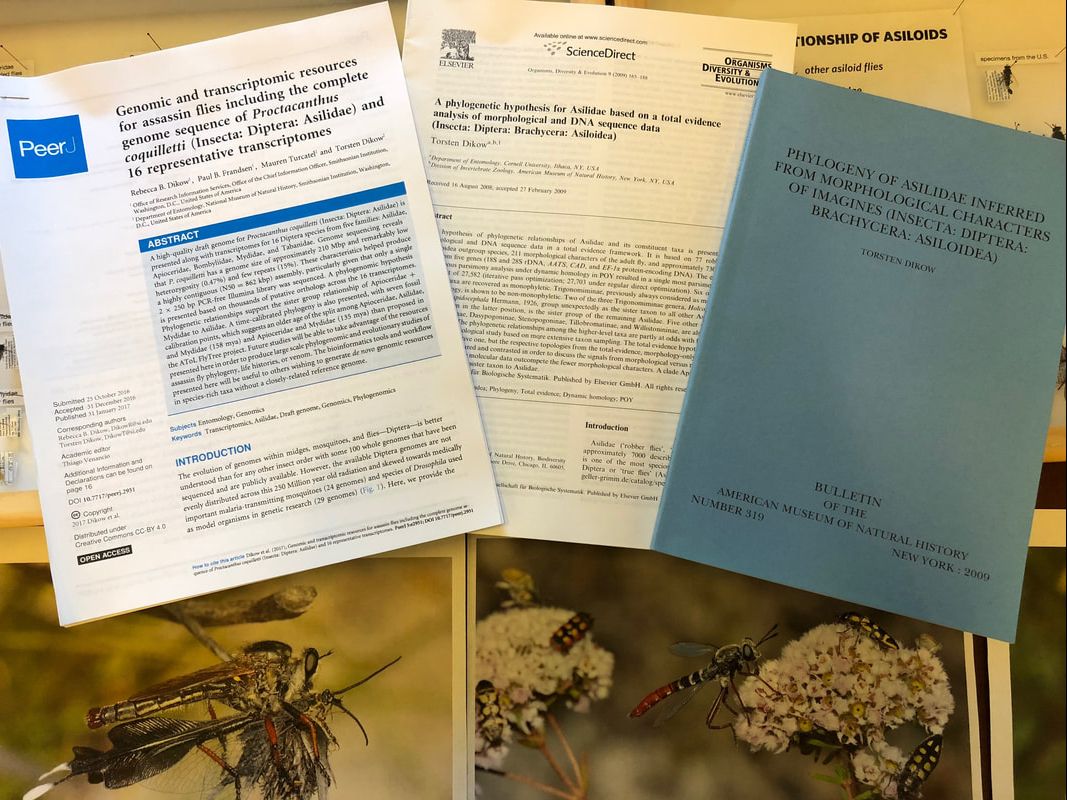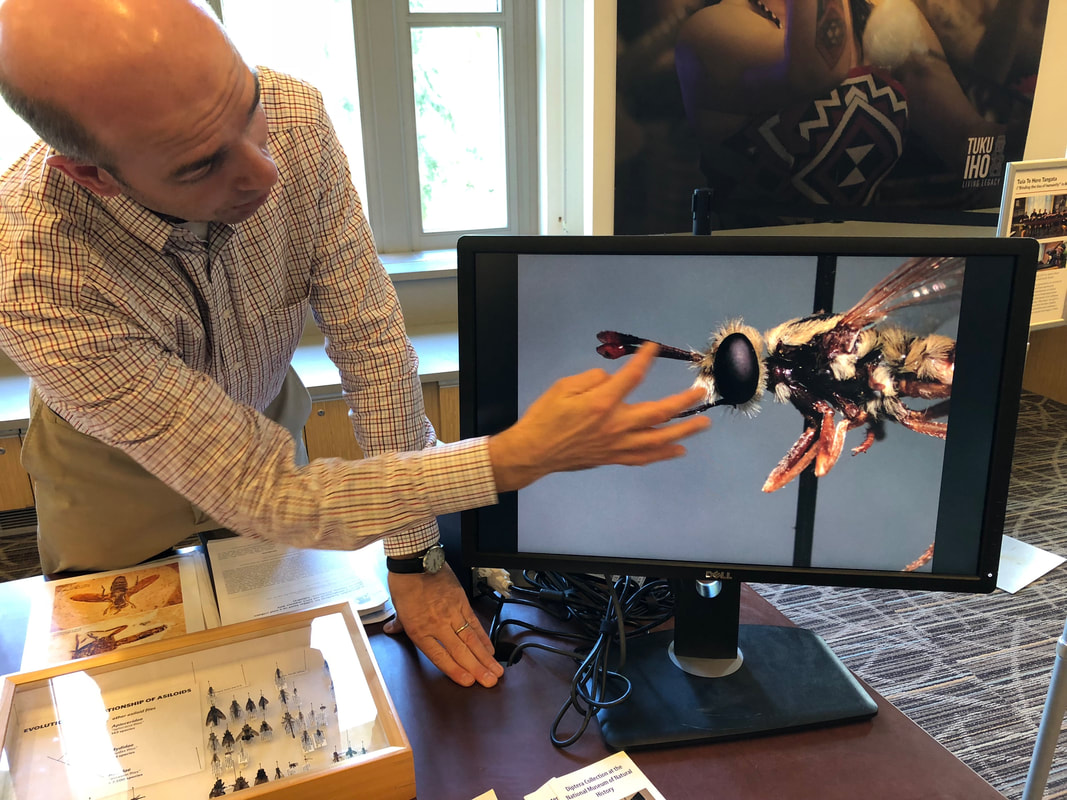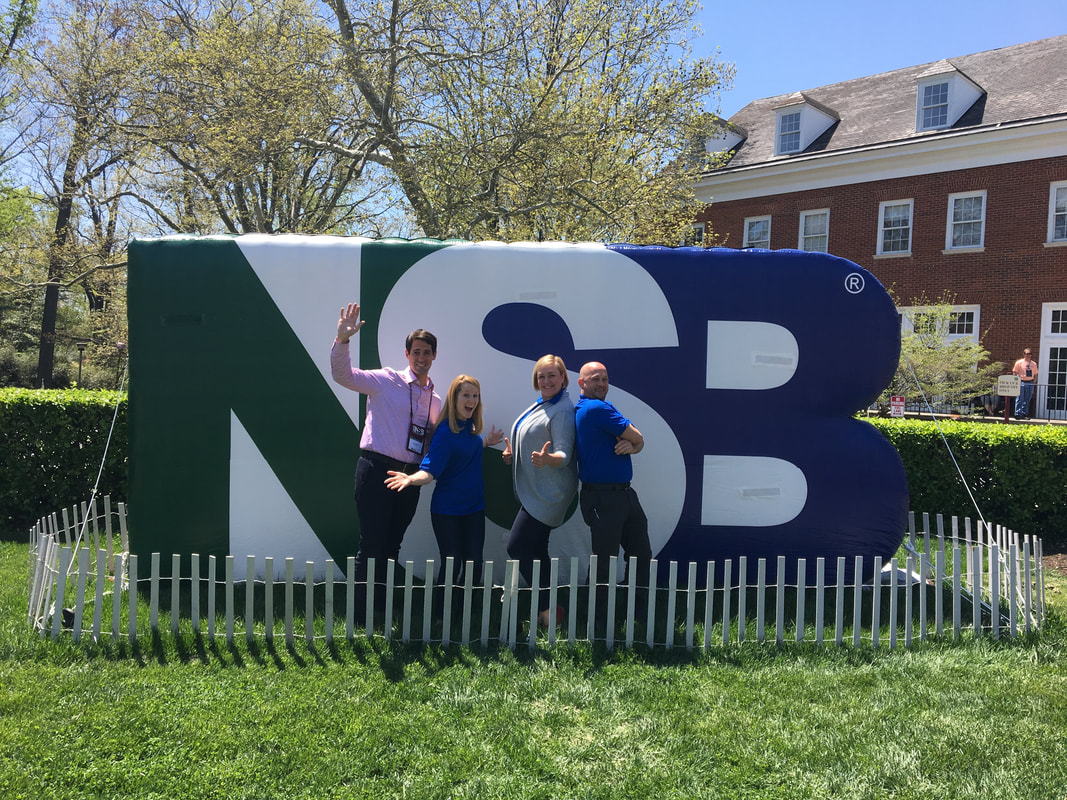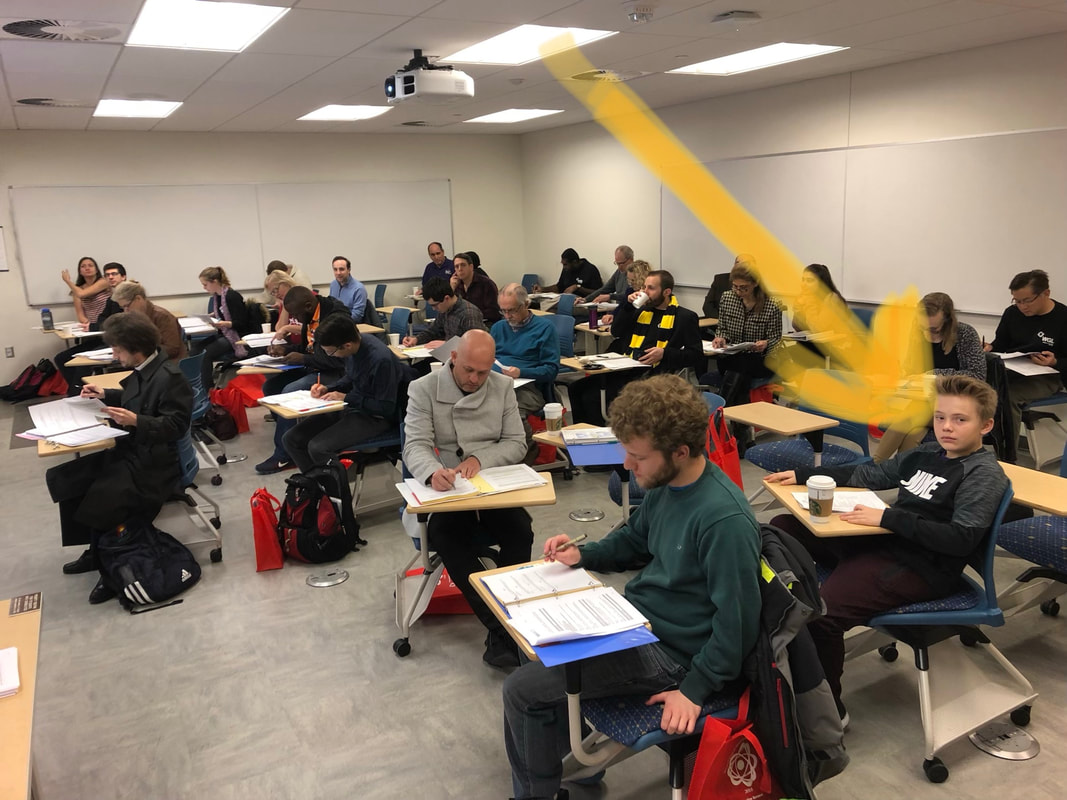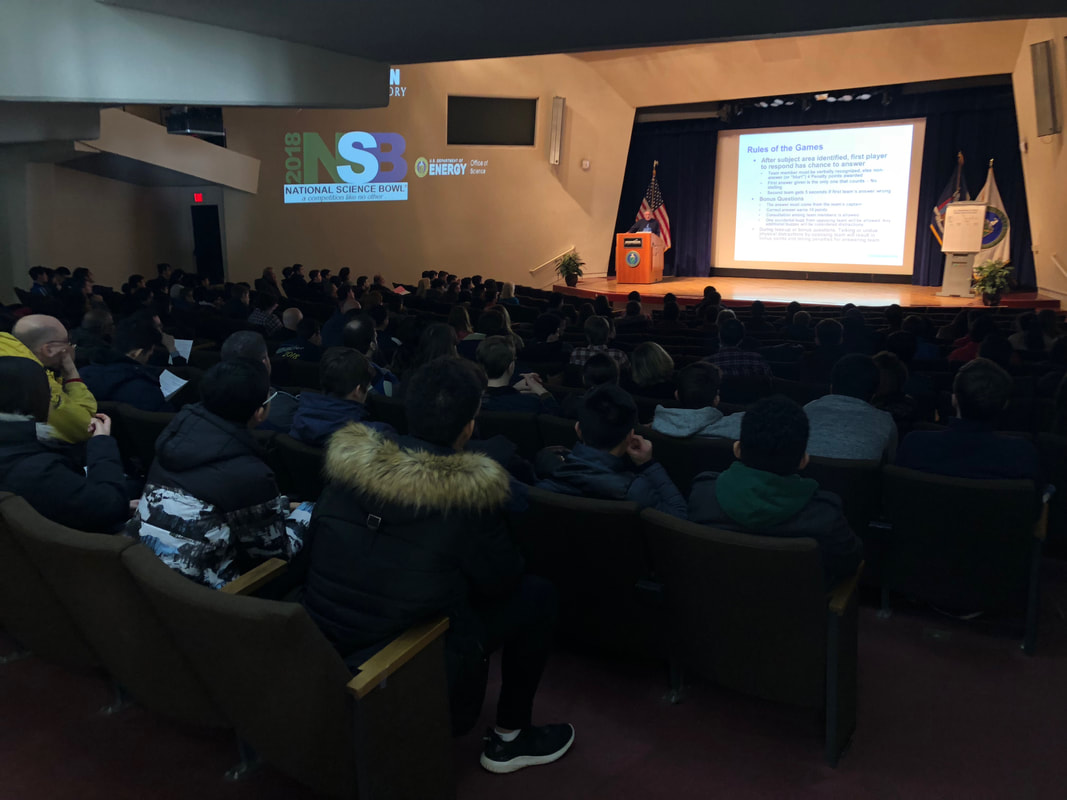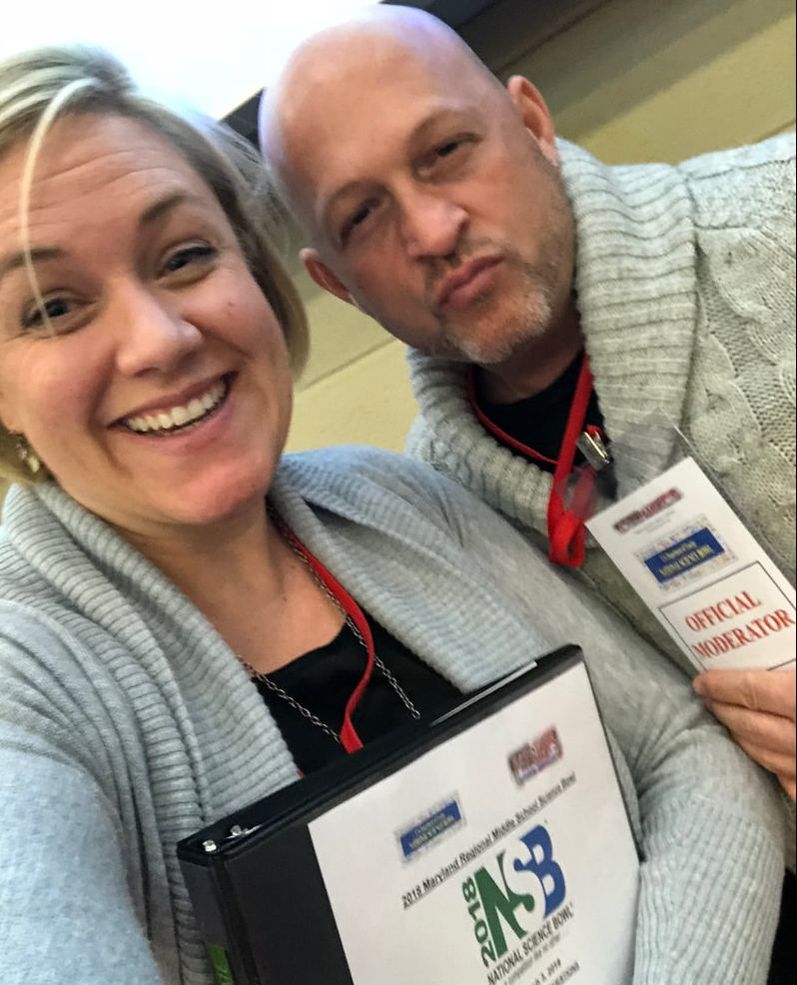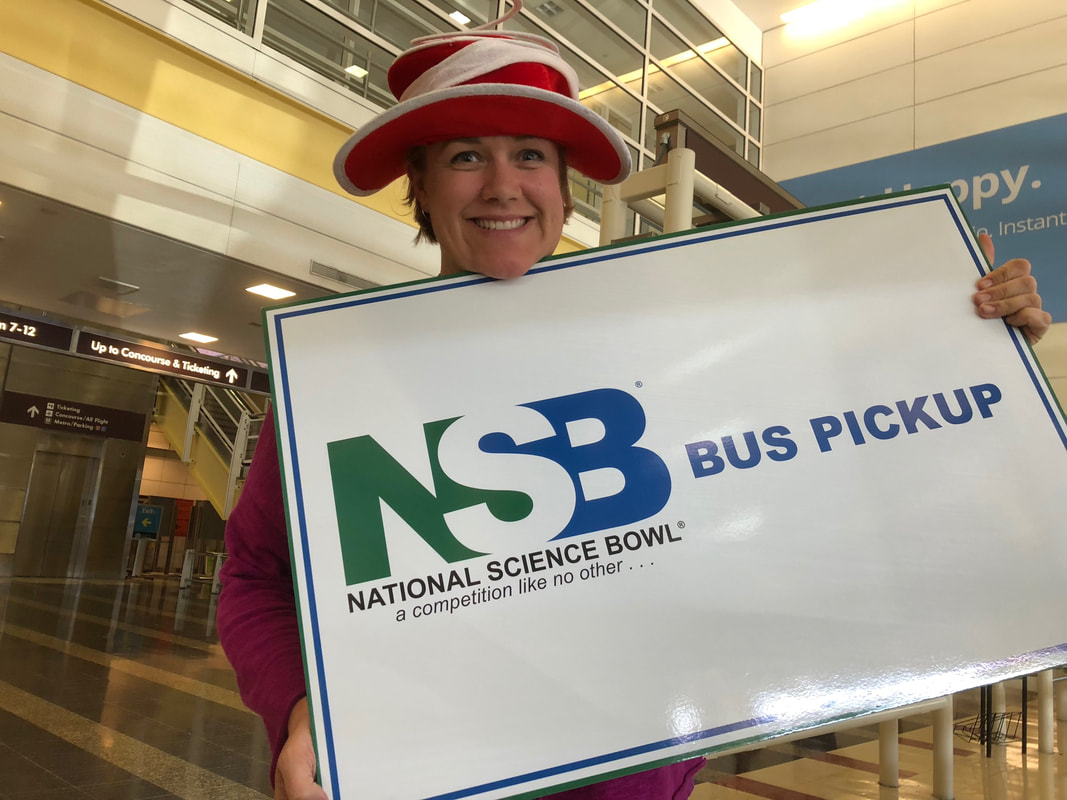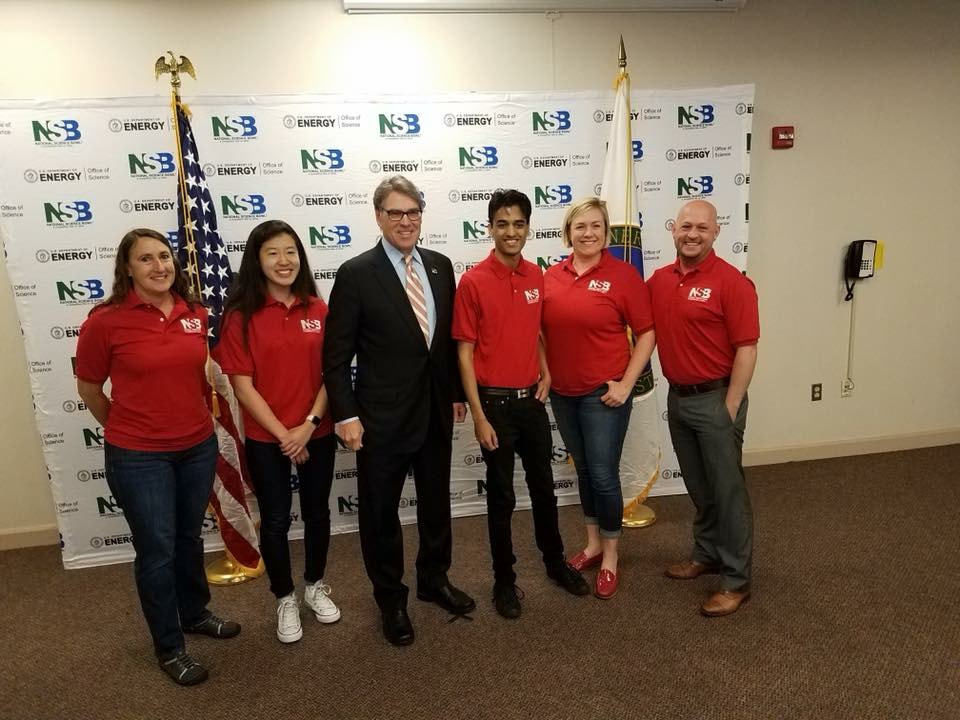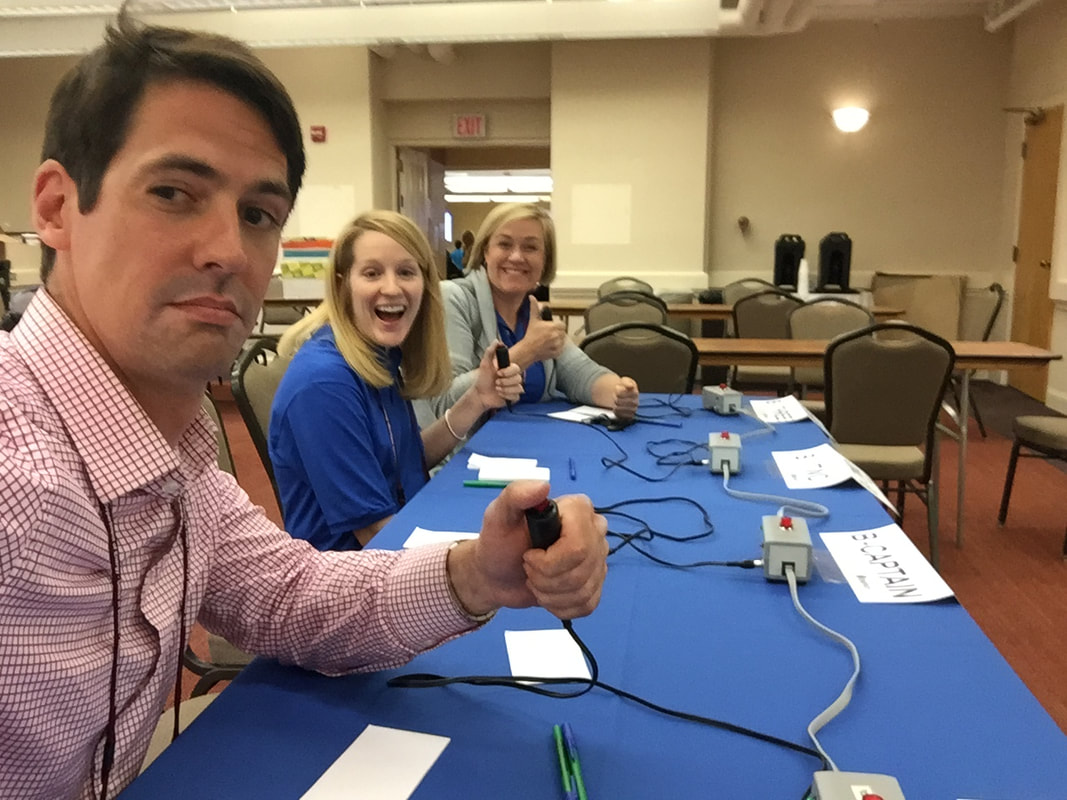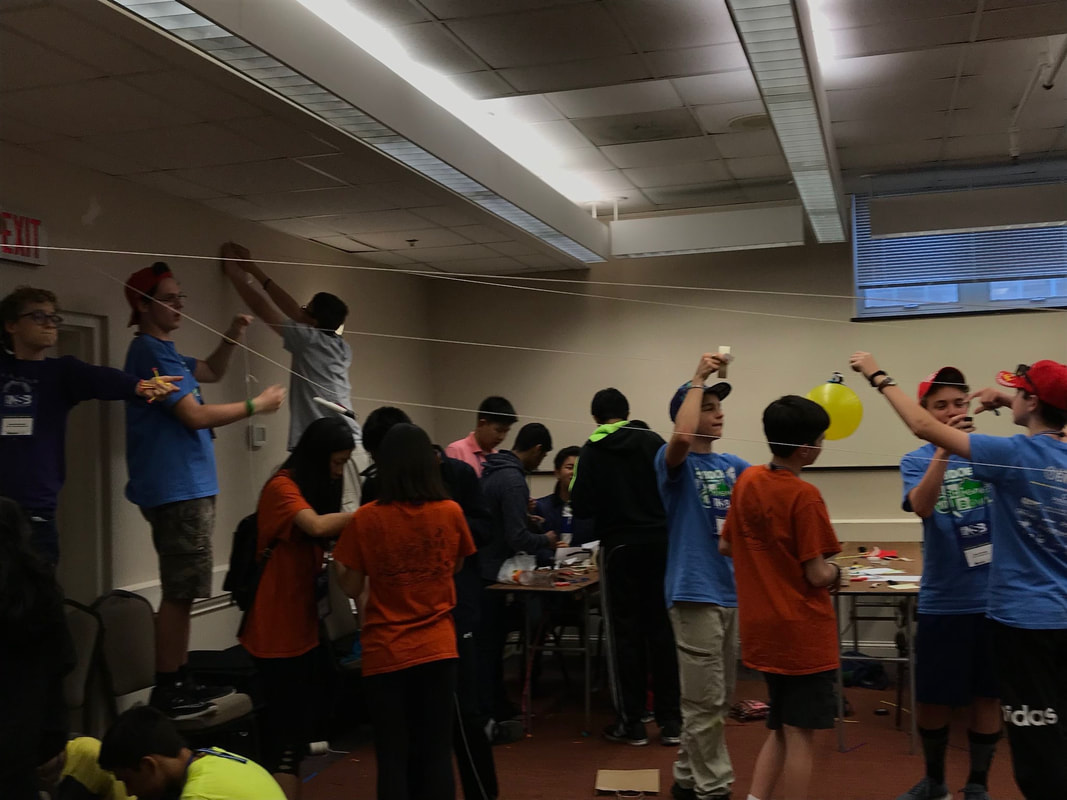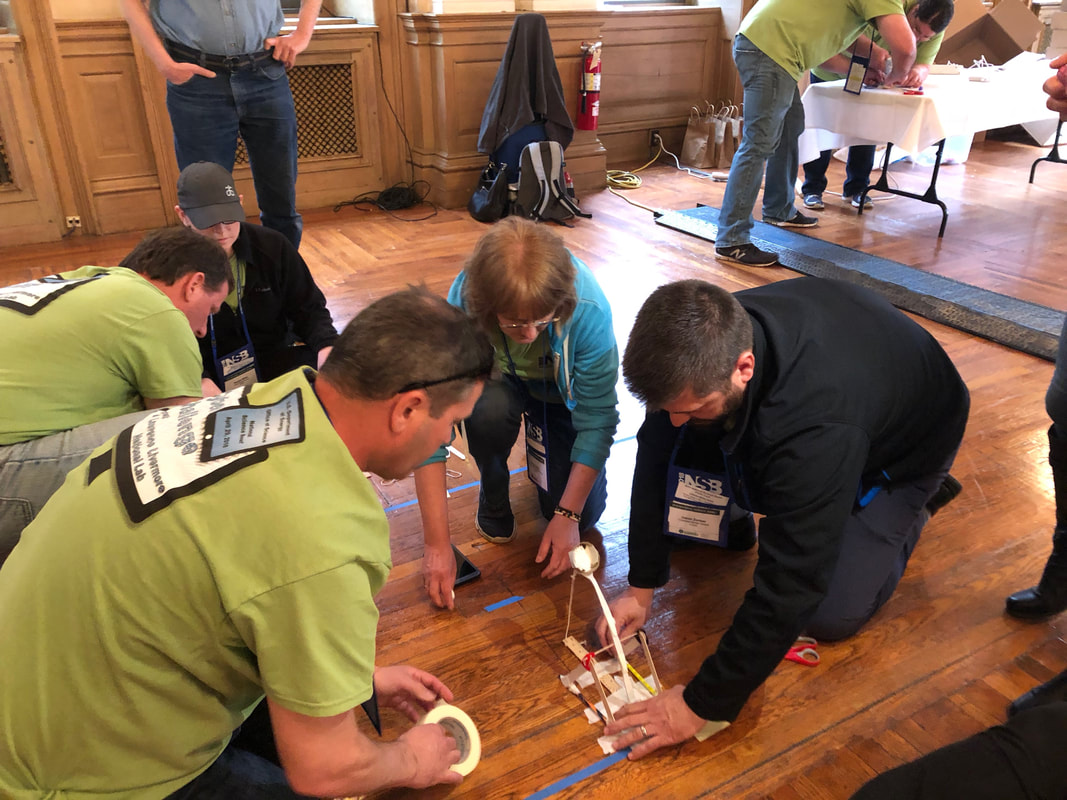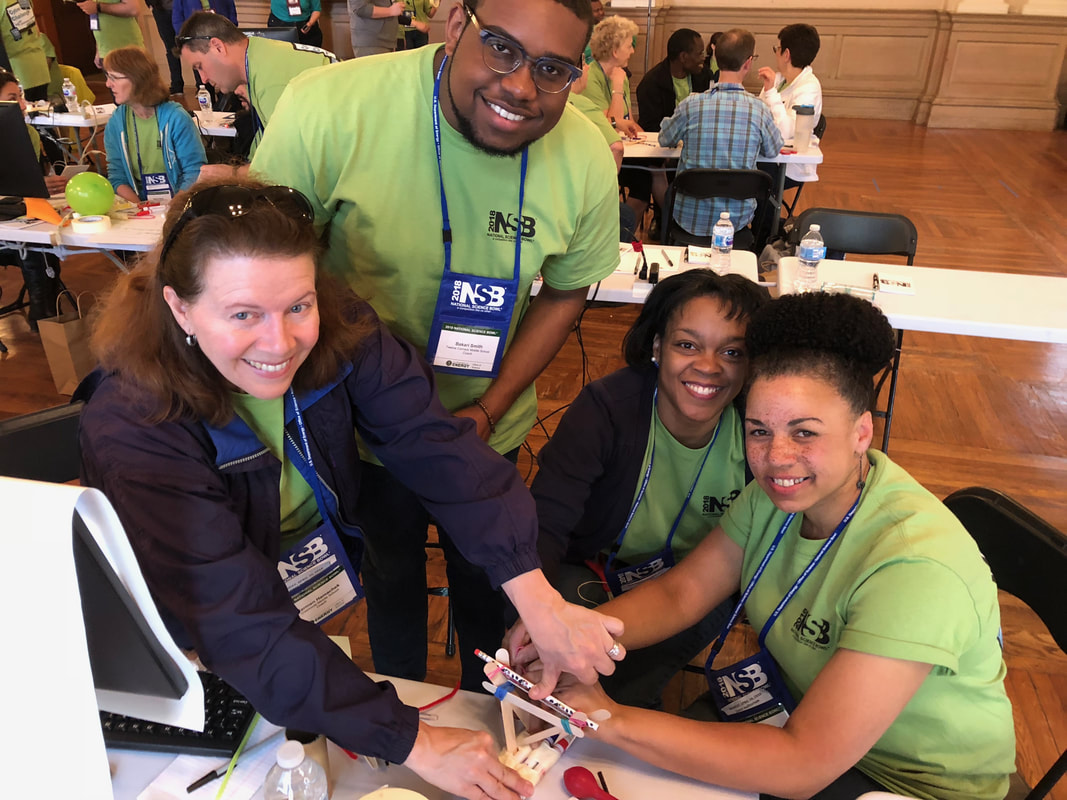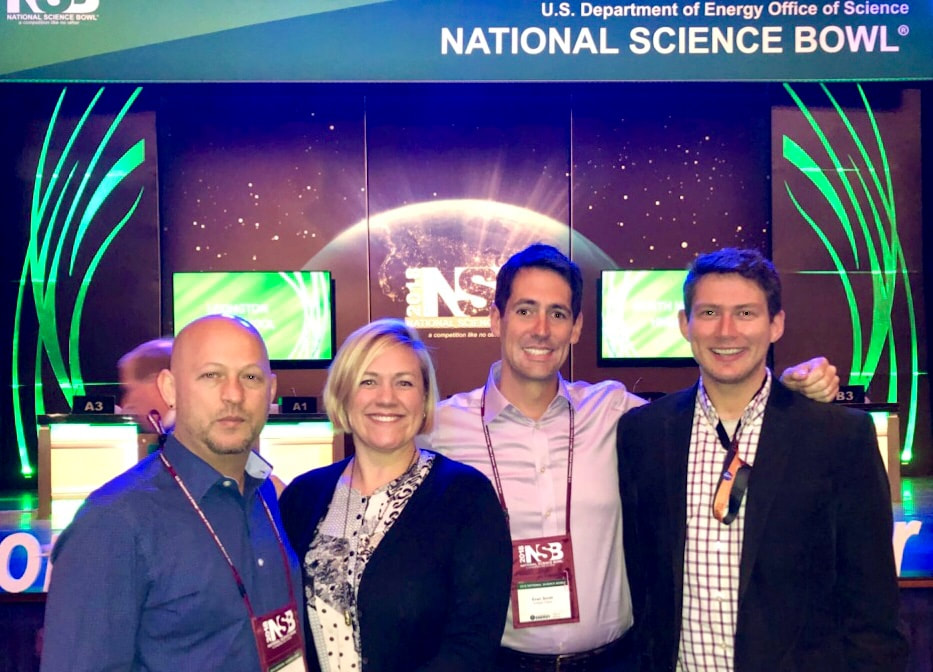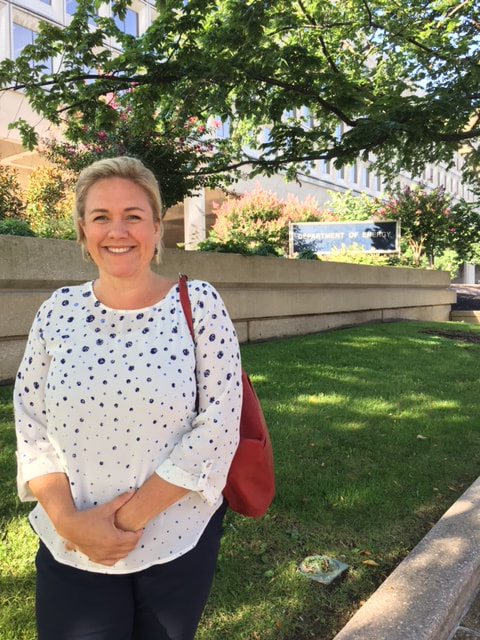|
The United States Botanic Garden has become one of my favorite places to visit while living and “fellowing” in Washington, DC. I find the warm humid air in the and the immediate burst of chlorophyll in the “jungle” to be calming and focusing. To me, the diversity of plant life within the facility serves as a reminder of the importance of protecting and preserving our Earth’s wild places, all within the hustle and bustle of our nation’s capital. George Washington, Thomas Jefferson and James Madison shared the dream of a national botanic garden and were instrumental in establishing the first one on the National Mall in 1820. At that time, 97% of Americans grew their own food. Today, with less than 3% of Americans growing their food, the botanic garden has even more important role of educating the public about the importance of plants to our environment, health and economy. As is commonly claimed, “we need people to fall in love with the environment before we ask them to save it.” The USBG has a wonderful offering of guided walks and public events. I’ve been lucky enough to be able to take advantage of a couple of these including a hour long tour on the Marvelous Morphology of Fruits and a two day teacher workshop called Hands on Plant Science (HOPS). The Marvelous Morphology tour was led by the the Dr. Susan Pell, Deputy Director of the USBG. Dr. Pell has experience as an informal science educator and a clear commitment to botanical education of children and the general public. Since my own academic focus was in the zoological side of biology, I know I have still have a lot to learn about plants. I mean, I can hold my own with plant structure and function, but the fact that bananas are berries and a raspberry isn’t a berry (it’s a drupe) still causes my eyes to cross with botanical vocabulary confusion! On the tour, Dr. Pell was very patient with my questioning, requests for clarification and quest for plant exemplars of the biological processes I teach. I left with motivation to design a lesson in which students are given a cladograms and example fruits from many plant families and then have to figure out of the fruit structures are analogous or homologous. I was also intrigued by Dr. Pell’s career path that lead her to become a director of the USBG. I like to share stories of practicing scientists with my students so they can see that not all people who love science have to become doctors or engineers (it’s not that those are poor career choices, it’s that they aren’t the only career choices). After the official tour had ended, Dr. Pell spent some time with me to share her academic and professional journey. Like everyone I have talked to about this, her path was meandering and opportunistic. Dr. Pell went to a small school as a undergraduate, thinking she would major in chemistry. However, her advisor was a plant taxonomist and she soon switched to a biology major. Being at a smaller school, she was able to do research as an undergraduate, which lead her on a path towards a PhD. For her doctoral work, Dr. Pell studied the evolutionary relationships between plants in the cashew family. She joined the USBG after a 15-year career as a scientist at the New York Botanical Garden and Brooklyn Botanic Garden and a 2-year stint as an AAAS Science and Technology Policy Fellow at the National Science Foundation. Throughout it all, she has maintained a focus on educating people about the importance of plants to the well-being of humankind. My favorite quote from my chat with Dr. Pell was, “Your job is what you spend your life doing, you should like it!” Fact. At Dr. Pell’s suggestion, I attended the two day Hands on Plant Science (HOPS) workshop at the USBG. Each summer, HOPS teaches and trains hundreds of students and teachers, focusing on underserved wards in the surrounding community. The HOPS teacher workshop is designed primarily for elementary school teachers, however I found many of the activities and lesson ideas inspiring and adaptable to high school students. It was great to be around a group of teachers who embraced elementary science education and were excited to learn ways to bring botany into elementary classrooms. The workshop was jam packed with activities, as a completed four lesson modules in two days. The workshop facilitator, Lee Coykendall is the Children's Education Specialist at the U.S. Botanic Garden. Over the past 17 years, Lee has built and expanded the children's education program, making the Garden a rich resource for students and teachers alike. The workshop was split into four modules, each with a different theme. The first module was focused on water and the scientific way of asking questions and wondering about the world. We focused on observation, using our senses for qualitative data and thermometers for quantitative data. We then measured the dissolved oxygen and pH of the water and discussed how these two qualities influence the wellbeing of aquatic organisms. We examined stream water under the microscope (always a hit) and modeled connections between urban water runoff and effects on regional watersheds (interesting factoid: Washington DC is 50% impermeable to water, meaning the buildings, roads and infrastructure can not absorb water from rain, which can lead to urban flooding events). It was fun to witness the other teachers as they explored scientific tools and discovered the joys of hands on science. The focus of the second module were the plant processes of photosynthesis, transpiration and reproduction. We viewed stomata under a microscope and discussed why plants will open and close their stomata. Again, no new scientific learning for me, but it was sure fun to see adults “oooh” and “ahhh” about something they had never seen before! One thing I did learn was about Brix refractometers - so cool! These tools measure the bending of light given the amount of sugar in a solution. We squeezed leafs on the tool and were able to actually get a quantitative measurement of the sugar that had been produced in the leaf by photosynthesis. The options for student inquiry are really wide open with the simple tool. We ended the first day of the workshop with a flower dissection and drawing. I have my students dissect and draw flowers every year, however as soon as I was given a frame for my work it felt much more important! I loved the simple idea of valuing the work of the students by framing the drawings. I was thinking also that it would be fun and educational for students to create anatomically correct flowers using modeling clay. The art theme followed through to day two of HOPS workshop. We went into the National Garden and used water-colors to paint the same subject at a macro and micro level. It was amazing! Everyone went off to their own region of the garden and found a subject for their observations. The macro-micro requirement really encouraged deep observation at multiple perspectives. Again, the art we produced felt valued as we were able to select a frame to display the paintings. We also created mosaic sundials and butterfly pollinators, every engaging activities for teaching kids about ecosystems. The final module was a plant Crime Scene Investigation. Participants were intrigued by a plant being stolen from the observatory and two prime suspects being investigated. Using the tools and knowledge we’d gained during the workshop, it was our job to explore seeds, soil, pollen and nectar to determine which of the two suspects had committed the crime. Luckily, scenario was fiction and the plant had just been misplaced. The workshop was a great way to spend two hot days in Washington, DC. A special thank you to the non-profit National Fund for the United States Botanic Garden for funding the workshop and for a clear commitment to student, and teacher, botanical education. The teacher participants learned a lot and left the workshop inspired and excited to include plant science within their curricular scope and sequence. The gift bag of materials given at the end of the workshop will enable teachers to put these lessons into action, a huge THANK YOU to the National Fund for making that possible. Once again my belief that teachers are incredible people who do great things for kids was affirmed. However, it's the kids in Washington who are the true beneficiaries of the lessons their teachers learned at the Hands on Plant Science workshop.
I can tell I miss classroom teaching, because I’ve already begun thinking about my lessons for the beginning of the school year! In any typical year, June would bring desperation for a break; but this year I am actually feeling a bit of excitement about returning to the classroom in the fall. The beginning of the school year is such a period of optimism; grand plans for what will be taught, who the students will become and a year full of engaging and effective lessons. It’s a vision that rarely is met by reality, but is motivating nonetheless. At the beginning of the school year I dedicate a significant amount of class time to establishing class norms and creating a community culture of learning and respect. I invest this time because I believe that the social and emotional learning of my students is as important as their learning of biological content. I want my students to develop skills and habits of mind that will lead them towards a life of impact, well-being and decency in treatment of others. As I state in my teaching philosophy, I know that as a classroom teacher, I have a vital role in providing a safe, healthy and welcoming learning environment so that my students can maximize their academic and social potential. Social and Emotional learning is riding an education wave in the United States, with schools, districts, states and the federal government all creating and/or implementing strategies that focus on a “whole child” approach to education. The Collaborative for Academic, Social, and Emotional Learning (CASEL) is the world’s leading organization advancing this approach to education. While attending the ASCD legislative advocacy workshop (which I previously wrote about here), I was lucky enough to attend a keynote session featuring Tim Shriver, who is on the Board of Directors of CASEL, is the chairman of the Special Olympics and happens to be the nephew of a former US president. Most importantly, Tim Shriver is a former classroom teacher with a PhD in education. During his presentation, Dr. Shriver stated that, “These times are volatile, uncertain, complex and ambiguous.” I was reminded that it is difficult for children to learn, growth and development within a doom and gloom culture. Teachers must utilize the power of hope and resiliency within our classrooms and one way to do that is to empathize and connect with kids and what they are experiencing. Using lyrics from the Hamilton musical as a metaphor, Dr. Shriver encouraged the teachers and principals in the audience to not “throw away our shots” at making a difference and connecting with kids because “history has its eyes on you!” I know that we can win I’m young, scrappy and hungry Historically, there has been a “leave your problems behind, enter this classroom to learn…” kind of mentality around social and emotional learning. That somehow the teacher in a classroom had the power to flip a switch in the student’s brains to force learning. Um...NO. That’s not how the brain works. It is impossible to compartmentalize the social and emotional development of children apart from their intellectual development. Social, emotional and academic domains are deeply intertwined in the brain and during the learning process. Social connection and emotion drive attention and attention drives learning. So what can be done? There are a plethora of boxed curriculums and instructional techniques to facilitate social and emotional learning. For me however, the most important thing a teacher can do is make an effort to connect with with individual kids. Research by Linda Darling-Hammond, emeritus professor at Stanford and principal of the Learning Policy Institute, shows that teachers who hoan their own social and emotional competencies have more positive relationships with students and peers and are better able to create academically supportive classroom environments that engage students more deeply in learning. Makes sense, because think about it… Nothing matters more than the relationships in your life. Not money. Not your job. Not your health. Relationships. 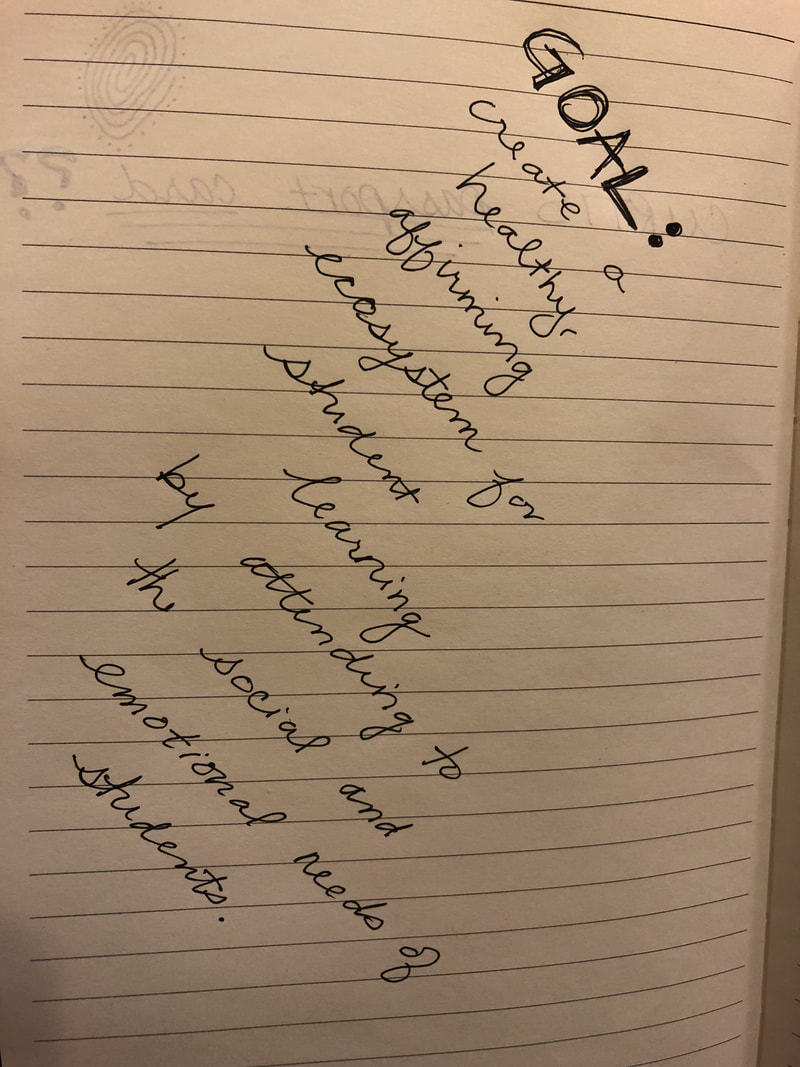 A page of my notes from Dr. Shrivers talk. A page of my notes from Dr. Shrivers talk. In addition, schools that have a SEL focus have significantly increased academic performance, decreased risk of failure and increased attendance rates. A focus on SEL does not need to come at the expense of content curriculum. It’s not either-or. Rather it is a choice for providing a high quality education or to have indifference to the facts. For those who feel that social and emotional learning doesn’t belong in a classroom, HOLD UP! Don’t we want to produce graduates that are employable? Isn’t workforce development a priority of schools? Well, guess what! Social and emotional learning increases employability! In fact, the Futures of Jobs report by the World Economic Forum includes top skills that are social and emotional competencies. SEL includes the ability to think critically and solve problems, communicate effectively, collaborate and resolve conflict and be a lifelong learner, all skills that will be vital for the future workforce.
Last week was “Capitol Hill Ocean Week” (CHOW)and the National Marine Sanctuary Foundation hosted a series of events to raise awareness around ocean systems, pollution and protection. I was able to attend three events that I found both educational and inspirational.
The first event was a pop-up exhibit on the National Mall called the Ocean Plastics Lab. The exhibit was sponsored by NOAA to showcase the global problem of ocean plastic pollution. Four shipping containers were modified for the exhibit so that the public could learn about the problem of plastic in our ocean. There was a lot of sample waste from ocean plastic and marine debris, interactive displays about the effects of plastic on marine life.
Fellow fellow Kelly was volunteering at the LUCid display, an interactive experience that is traveling with the Ocean Plastics Lab. Wearing a biosensor headband, volunteers control the video display. Apparently, in a more meditative state of mind the imagery shifts from swimming through plastic in ocean waters to seeing whales in clear water. I was pretty good at getting into a zen state!
The other two events I attended for CHOW were scientific talks about the status of ocean ecosystems. I went to sessions that related both to my personal interests and content that is part of the IB Biology curriculum I teach. The first session was titled, “Recovering Coral Reefs.” I’ve had an interest in coral health ever since I traveled to the Bahamas in 2009 to assist with a coral reef survey. Covering less than 1 percent of the ocean, coral reefs support 25 percent of marine life globally to provide an estimated $1 trillion in value to the world economy, including $300 to $400 million annual in value for food and livelihoods from tourism, fisheries, and medicine. Reefs are integral to the livelihoods and well-being of billions of people. But, we risk losing these valuable ecosystems. Nearly 75 percent of the world’s coral reefs are threatened by overfishing, habitat destruction, water pollution, climate change, and ocean acidification. Efforts to conserve and restore coral reefs are lagging far behind their rate of destruction. To preserve this amazing biodiversity, we must protect these valuable ecosystems and develop new conservation solutions and restoration techniques to protect these invaluable ecosystems.
There was a discussion by a panel of three scientists who monitor coral reefs. Greg Asner from the Carnegie Institution for Science studies global ecology and earth systems using remote sensing via satellite or airplane. He observes and maps coral reef fragmentation in effort to determine where restoration efforts should be focused. Erinn Muller is a coral health and disease scientist with the Mote Marine Laboratory in Florida. Documenting coral decline was understandably depressing for her, so she now focuses on recovery of reefs, by “outplanting” genetically variable and disease resistant coral starters. Early results suggest the outplanting effort is working, and her goal is for another 50,000 outplants next year however the program’s success will depend on the government response and dedication of funds for research and restoration of reefs. Luiz Rocha is an ichthyologist with the California Academy of Sciences. He studies mesophilic coral reef ecosystems; these are deeper reefs (200-500 ft). With each dive he discovers new species because these deep reefs are unknown and unexplored. However, the reefs are still at human induced risk. Recently he found plastic on the reef, brought to the depths when a hurricane passed through the region.
The three scientists all communicated a vision of hope and a desire to scale up the restoration projects occurring at a local level to a more global scale. The effort will required international collaboration between nations, increased funding, public-private partnerships and a continued reliance on solid science. Members of the public who support these efforts should amplify the message via social media, influence others, decrease use of plastic, and encourage governments to address climate change. #oceanoptimism
In this session, I learned how states are coping with local effects of ocean acidification as state and federal policymakers draft legislation to mitigate and adapt to ocean acidification. My home state of Washington has been particularly affected by acidification, and I was able to make some personal connections to the impacts of acidification. In fact, the University of Washington now hosts the Washington Ocean Acidification Center within the College of the Environment.
The panel include experts from a diverse set of perspectives. Jan Newton is an oceanographer in the Applied Physics Laboratory at the University of Washington School of Oceanography and School of Marine and Environmental Affairs. Karina Nielsen is a biologist and the director of the Estuary and Ocean Science Center at San Francisco State University. Nichole Price is a research scientist and director of the Center for Venture Research on Seafood Security at the Bigelow Laboratory for Ocean Sciences. Joseph Salisbury is a research professor of Oceanography at the University of New Hampshire and Brett Veerhusen is the head of Ocean Strategies and is an Alaskan commercial fisherman.
As with all my experiences as an Einstein Fellow, I am so thankful for my opportunity to be here, learning and engaging with issues of concern that resonate with me. I will take my learning back to the classroom for my students benefit.
I was able to visit “the other Washington,” my actual home state of Washington during the first week of April. Coinciding with my grandmother's 90th birthday celebration, I planned a trip to check in with my home school district and visit the Pacific Northwest National Lab (PNNL). The PNNL is located in Richmond, which is east of the Cascade mountains, about a three hour drive from where I live in a suburb of Seattle. I had never visited the lab, so I was excited to have the opportunity via the Einstein Fellowship. The PNNL has a staff of 4500 people, who work together with a multidisciplinary approach to solve “big problems.” The lab prides itself on maintaining solid partnerships with academic, industrial and government stakeholders while focusing on four scientific missions:
My visit of the lab focused on the biological and computational sciences. I was amazed by by visualization and interaction studio. According to the documentation I was provided, the studio features the work of a team of, “visual analytics researchers who love making big, complex data useful through great visual design, compelling interaction, support for sound analytic methods, and solid engineering. We invent new visual metaphors, create analysis algorithms, and deliver software products that put useful analytic capabilities into our users’ hands.” I was able to interact with some of the data visualization tools, such as the Visual Patent Search, data mining challenges, active data canvases and virtual reality interfaces. My favorite experience was being able to use virtual reality to zoom and manipulate biological molecules. I honestly felt my life was complete after I had “walked” through a DNA strand. As with the other Department of Energy national labs, the PNNL hosts interns from various educational experiences and backgrounds. I had the pleasure of meeting two high school students who are interning at the facility; one in a soil bacteria lab and the other in a 3D microscopy imaging lab. The students shared their interests and work with me, and I was once again reminded of the incredible impact that “real life” experiences and learning have on high school students. In my experience, the students are clamoring for opportunity to engage in scientific research. Unfortunately the limiting reagent seems to be the number of scientists and/or research facilities who are willing to engage with high school student internships. I am looking forward to sharing what I learned at the PNNL with my students when I return to the classroom next fall.
It probably doesn’t come to a surprise to anyone that I love the Smithsonian National Museum of Natural History (NMNH). Each time I visit I am able to learn more about the natural world and the role of museum collections in the preservation and study of biological samples from around the world. So, for my “First Friday” (a monthly gathering of the Einstein Fellows, planned by a different person each month), there was no doubt that I was going to try to get our group behind-the-scenes of my favorite D.C. museum. Luckily, I was able to make a connection to a NMNH scientists via a different scientist with which my students and I had volunteered in the past. In 2017 my students and I volunteered on a project in Costa Rica during which time we learned about the complex relationships between caterpillars, the plants they eat, the parasitoids that eat them, and the changes in climate that are reshaping the rainforest. The community of caterpillar scientists is rather small, and the principal investigator on that project was able to e-introduce me to Dr. John Brown, entomologist extraordinare with the NMNH. I reached out to Dr. Brown early in the fellowship about the possibility of being given a behind the scenes tour of the entomology department at the museum. I am so thankful that Dr. Brown was willing and eager to host our group. The tour was SO COOL! We focused on the Lepidoptera collection, the butterflies and moths. The Lepidoptera Collection has over 4 million specimens, occupying over 30,000 drawers in metal cabinets that stretch as far as the eye can see! The museum has the most complete representation of both larvae (123,000 specimens) and adults in the Western Hemisphere plus samples from the nearctic, palearctic, neotropics and far east. Dr. Brown is a USDA research entomologist, so his research primarily focuses on insects that are of economic importance to American agriculture. Dr. Brown did a great job explaining why an understanding of insect taxonomy, natural selection and basic biology are important in protecting and understanding national and ecological interests. After our tour, I lead a session with the Fellows about using creativity and visual arts as a way to increase student engagement and to teach observation skills. We had fun creating visual displays of the favorite insects we had seen on the tour. I also attended a public session at the NMNH about assassin flies, hosted by Dr. Torsten Dikow. I was the only one there (!) so Dr. Dikow and I had a great chat about his career path and his work as the Curator of Diptera (flies) at the museum. Dr. Dikow focuses his work on the phylogeny and revisionary taxonomy of asiloid flies. These are incredible flies (7500 different species) that catch and eat other insects IN FLIGHT! They have mouthpieces adapted to stab the pray, release venom and suck in the nutrients! Some of them even mimic bumble bees in appearance, thought to be an adaptation for avoiding being eaten by birds. It’s really been a gift to have had the opportunity to meet these scientists and I am very appreciative of their patience with a curious biology teacher who keeps asking a lot of questions!
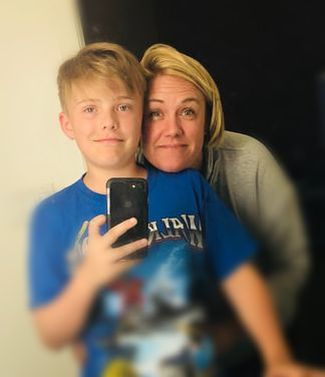 The kid and I. The kid and I. When I first applied to be an Einstein Fellow, I was open to the prospect of a Capital Hill placement. However during the interview weekend (February 2017) I learned more about the requirements of being in a congressional office and realized that the time commitment wouldn’t work with my family situation. Since my husband travels 100% for his job and we have a early-adolescent son, I knew I needed the flexibility to arrive to work early and leave early enough in the evening to get home, make dinner, help with homework and drive to sports practices. It wouldn’t be fair to my son and it would be hard on me to to be in Washington D.C. without a support network to lean on when I needed to manage our busy (sometimes competing) schedules. A congressional office placement couldn’t provide the flexibility I knew I would need. Luckily, at the interview weekend I was asked if I would be interested in a placement within the Office of Science in the Workforce Development for Teachers and Scientists (WDTS). Obviously I said yes, and was awarded the fellowship! I am so grateful for being placed in this office as it has allowed me the opportunity to develop my knowledge in both the scientific and policy realms while having the flexibility to focus on my #1 priority of being a good mom to my kid. 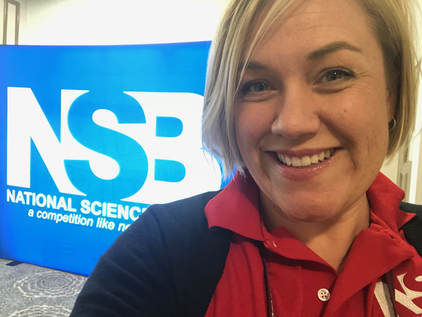 Within the WDTS team, a focus of my duties has been assisting with the National Science Bowl. I didn’t know much about the National Science Bowl when I accepted the fellowship and as such it was a quick and steep learning curve for me. The program is run by an incredibly dedicated and organized federal employee who has help from a loyal team of regional coordinators, alumni and volunteers. My role as a fellow was to help as needed and not get in the way! In the fall, I was tasked with looking for ideas to enhance the National and Regional Science Bowl programs and websites by researching other academic competitions. I explored the websites of twenty academic competitions and compiled a report on the features of the other academic competitions that I found to be especially engaging, helpful or interesting. They were not true suggestions or recommendations, as I am not privy to all of the restrictions placed upon a federally funded program or limitations on website development and hosting. However, perhaps the features I suggested can serve as inspiration in future website development or program design changes. I also reviewed questions for the regional competitions and the national finals. A team of subject-matter-expert question writers submits questions, which are then reviewed and reviewed and reviewed and reviewed again to ensure content accuracy and format conventions. I focused on the middle school life and physical science questions and the high school biology and chemistry questions. It was tedious but also an incredible learning opportunity. I often found myself exploring academic tangents, getting deeper and deeper into a web of facts, structures, functions, reactions and equations. It was awesome! At no other time in my life have I had the opportunity to just sit and learn more about the classification of aseptate fungi or the standard-state free energy of formation calculations! I had other tasks for Science Bowl, including the development of a Snap Chat filter, updating the National Science Bowl Facebook page with review questions and relevant news articles, proofreading team biographies and assisting with the packing and organizing of materials. I also updated some of the Powerpoint presentations and assisted with volunteer recruitment for the national finals. Shout out to my fellow fellows (!) David, Michael, Evan and Jennifer for making time in your schedules to volunteer! Leading up to the National Science Bowl finals, there were over one-hundred regional science bowl competitions around the country. I was able to attend three of the regional events: The Maryland/DC high school regional, the Maryland/DC middle school regional and the Brookhaven National Laboratory Regional High School Science Bowl. The student participants were really fun to spend the day with; often crazy-smart kids who have found like-minded friends through academic competitions. The game-play, strategy, pace and intensity of the competition was fun to observe. The National Science Bowl finals were at the end of April. The winning middle and high school teams from each of the regional competitions flew to DC to spend Thursday through Monday touring, learning, laughing and of course, competing! On Thursday I had the pleasure of spending a full, long day greeting teams at the Reagan airport; it was fun to meet kids and teachers from all over the United States and territories. Teams from as close as Maryland and as far as Alaska were arriving at the airport. On Friday, while the middle school teams were exploring the National Mall, the high school students were participating in the “High School Science Day” which was a series of speakers and breakout sessions with a focus on cyber security. Secretary Perry spoke with the students and encouraged their continued education and eventual career path in STEM fields. He created an analogy between the competition of the National Science Bowl and the competition the United States is in with other countries. OK. On Friday afternoon I assisted with the high school Division Team Challenge activities. Teams of high school students complete hands-on competitive tasks. The scores earned in the challenges will serve as tie-breakers at the end of the round robin rounds, if necessary. I had worked with Jeff Dilks, former Einstein Fellow, to prepare the tasks and it was fun to see them in action. This year the tasks involved determining the efficiency of a bouncy ball rocket, estimating thread counts using wavelengths and optics, determining the coefficient of restitution between dropped balls and different floor types and estimating the pressure developed in a potato gun before it is shot. It was clear that some teams were overwhelmed with the challenges and didn’t know where to start, whereas other teams knew immediately how to begin addressing the problem. Saturday, while the high school teams had their time at the National Mall, the middle school students were having their academic competition. I served as a “timer” during the round robin rounds, ensuring that the toss-up questions were answered within the five second limit and that the bonus questions were answered within the twenty second limit. I was responsible for planning and leading sessions for the middle school students on Saturday afternoon. After being eliminated from the competition, the student teams participated in a "Middle School Enhancement Activity." Knowing that the kids would be physically and intellectually exhausted, I created an engineering challenge for the student in which they had to design a "Wacky Monster Transporter." It was chaotic and fun for the students and I! On Sunday I was responsible for planning and leading sessions for the middle school coaches while the students were participating in a Cyber Challenge. It was great to be working with "my people" (other teachers) and to again be facilitating a professional development session. The coaches were receptive to engaging in an engineering design challenge - designing a catapult to fling a marshmallow. As is typical with design challenges, the teachers had grand plans for how far the marshmallows would move, and the reactions when we measured distances in centimeters rather than meters led to a great laugh. Here's a link to a Padelet with team photos and marshmallow flinging distances. Middle School Coaches at building marshmallow launching catapults! The final round competitions were the culmination of a lot of hard work by a lot of people. The pomp and circumstance of the event is justified, as the student competitors certainly do represent some of the brightest, quickest intellects in our nation. It was a pleasure to have played my little part in the Science Bowl this year and I hope to remain part of the science bowl family for years to come.
|
Archives
July 2018
|
I give many of my IB Biology resources away, for the benefit of students and teachers around the world.
If you've found the materials helpful, please consider making a contribution of any amount
to this Earthwatch Expedition Fund.
Did I forget something? Know of a mistake? Have a suggestion? Let me know by emailing me here.
Before using any of the files available on this site,
please familiarize yourself with the Creative Commons Attribution License.
It prohibits the use of any material on this site for commercial purposes of any kind.
If you've found the materials helpful, please consider making a contribution of any amount
to this Earthwatch Expedition Fund.
Did I forget something? Know of a mistake? Have a suggestion? Let me know by emailing me here.
Before using any of the files available on this site,
please familiarize yourself with the Creative Commons Attribution License.
It prohibits the use of any material on this site for commercial purposes of any kind.
